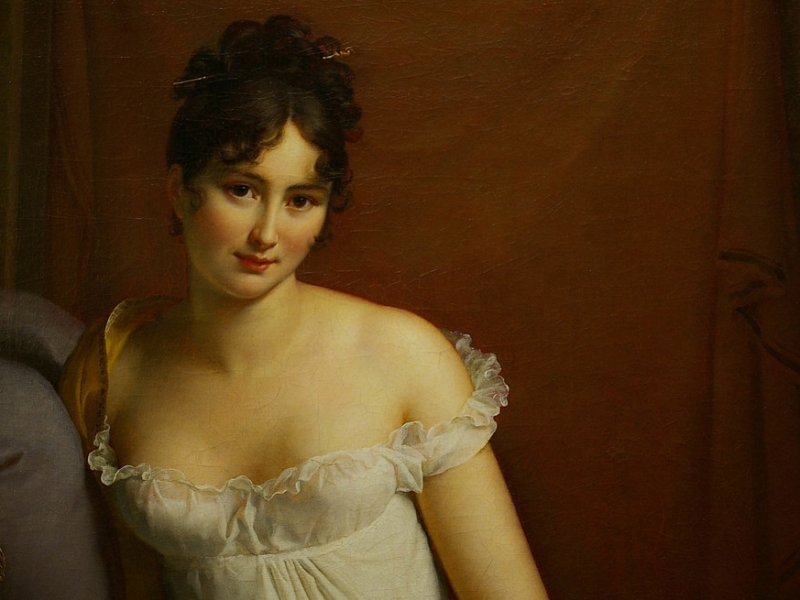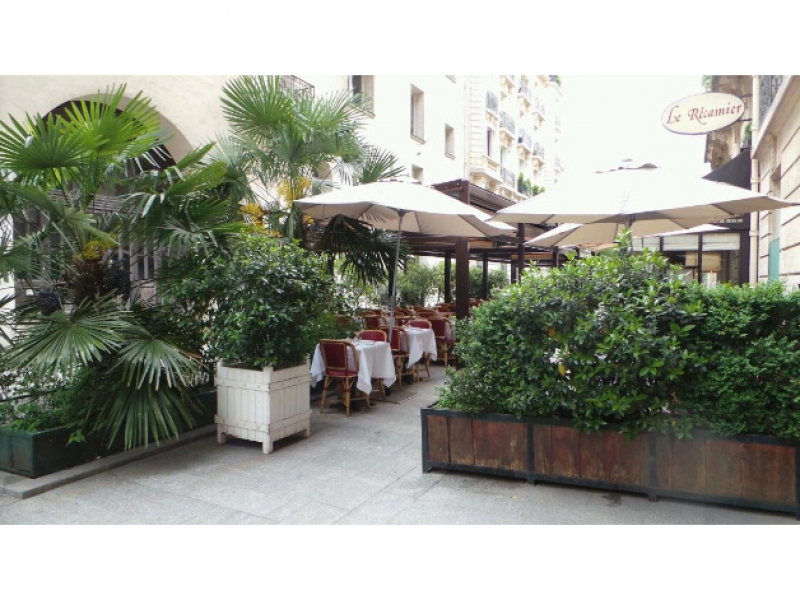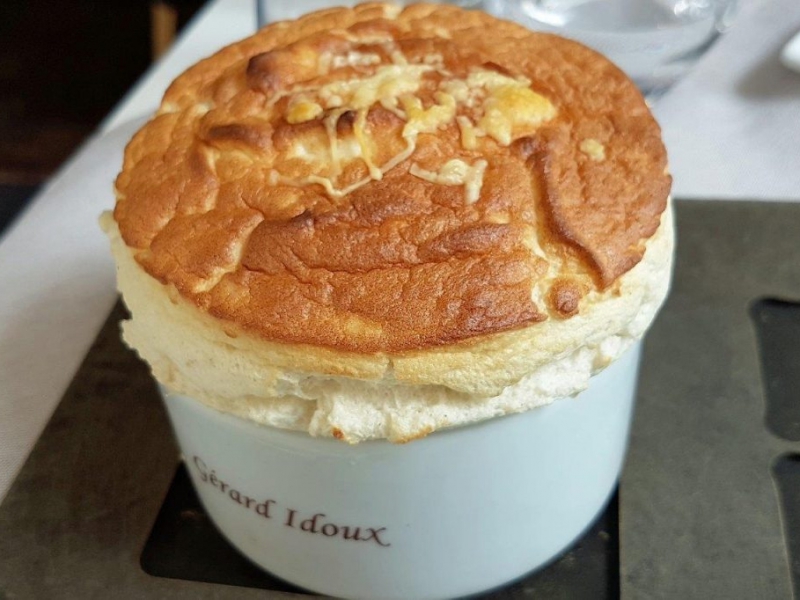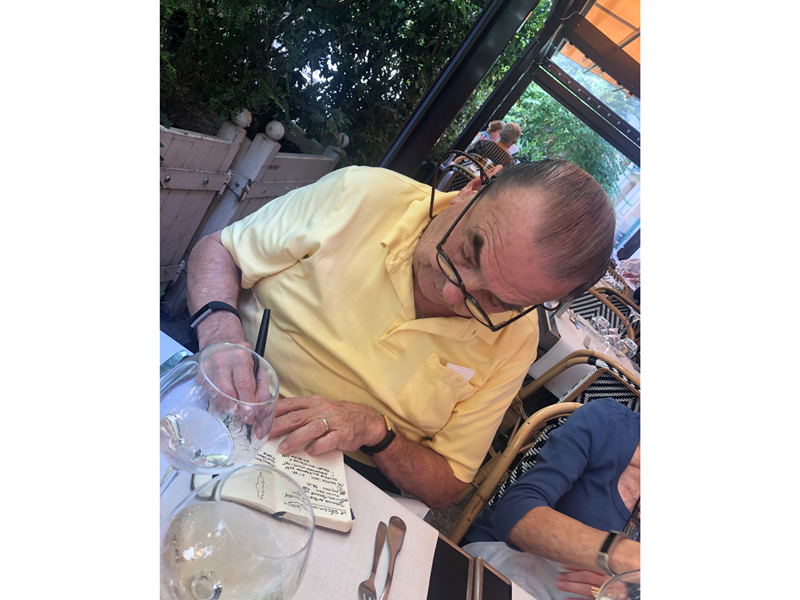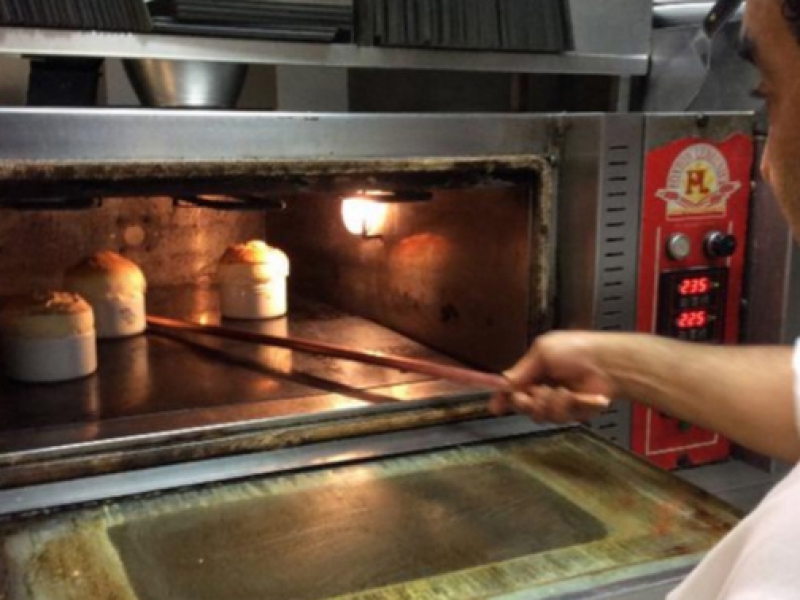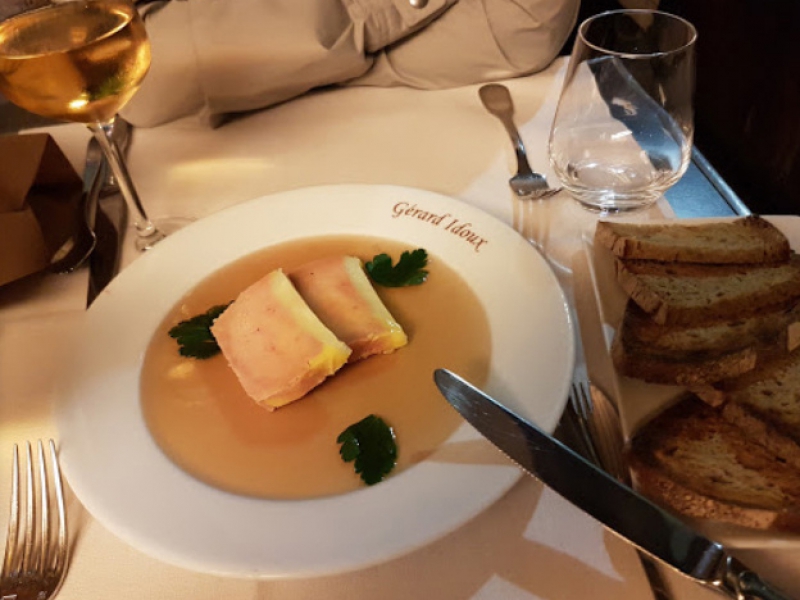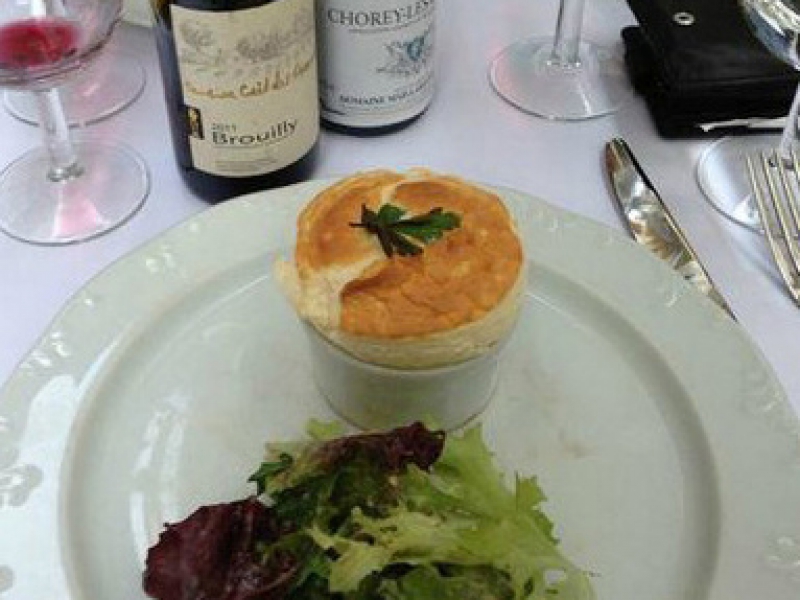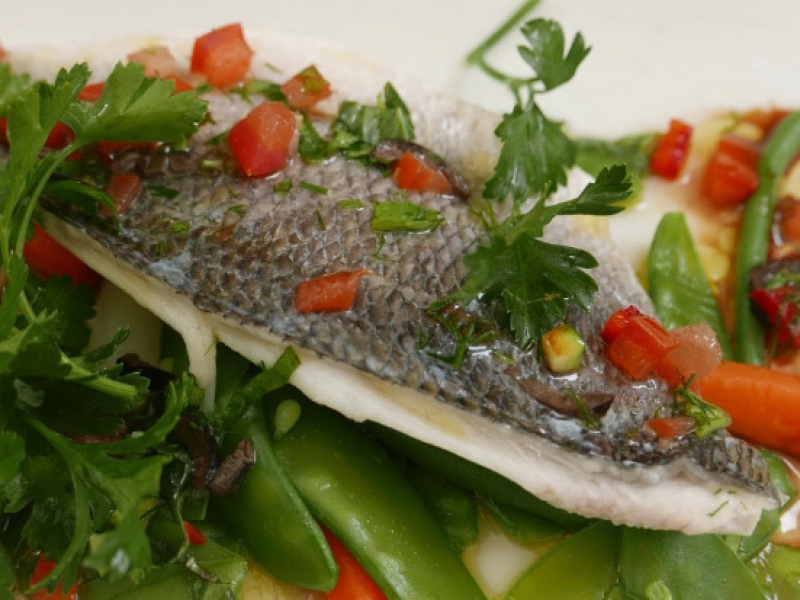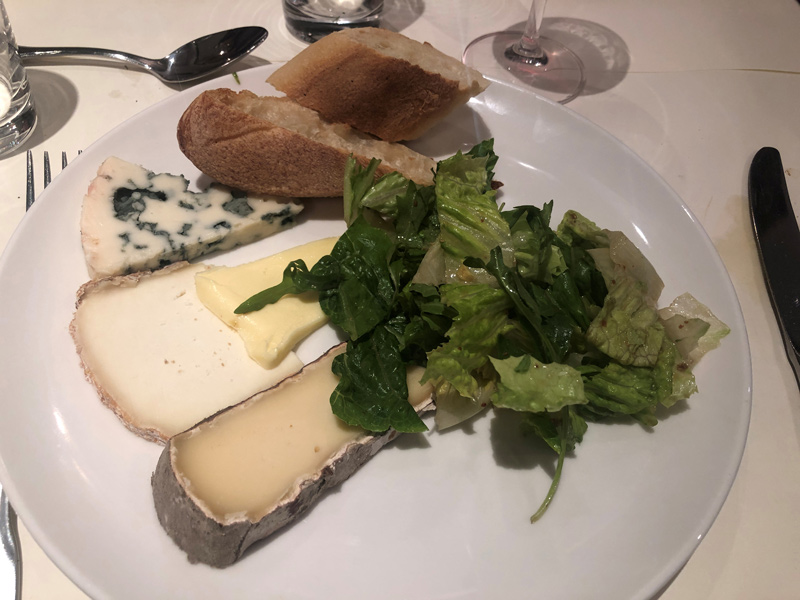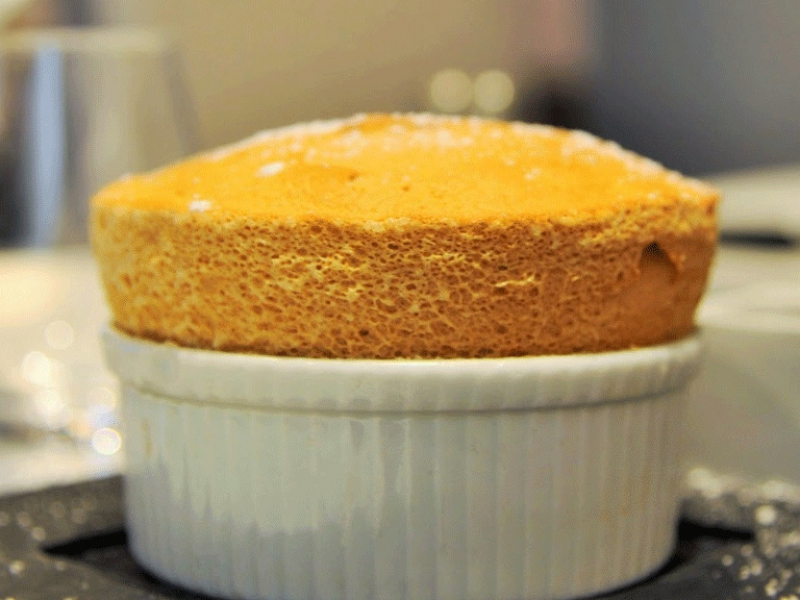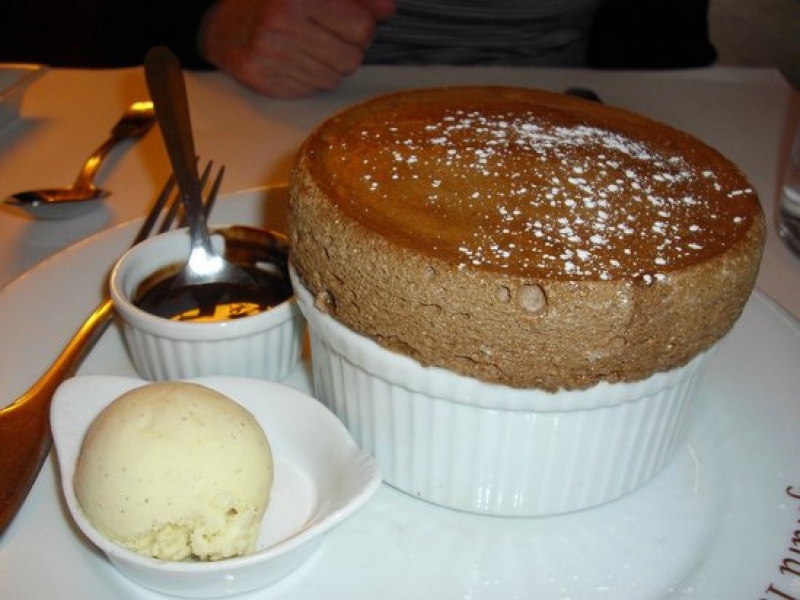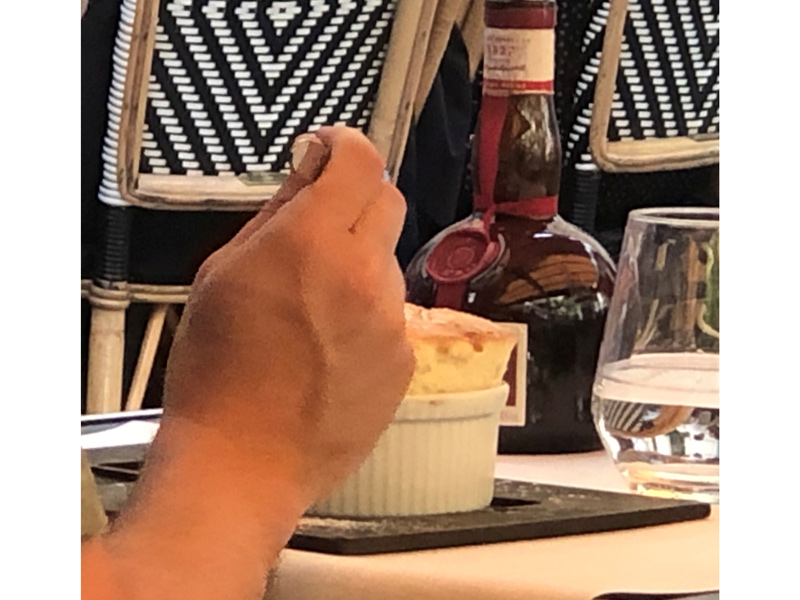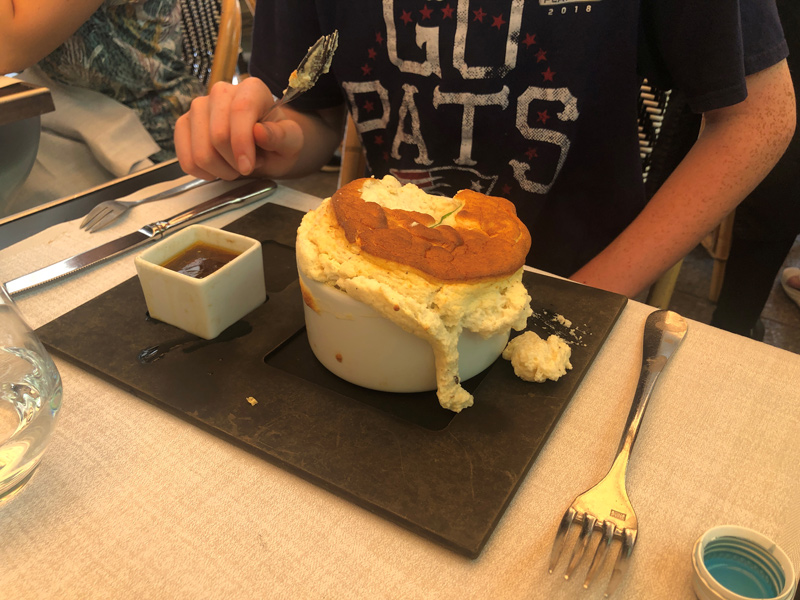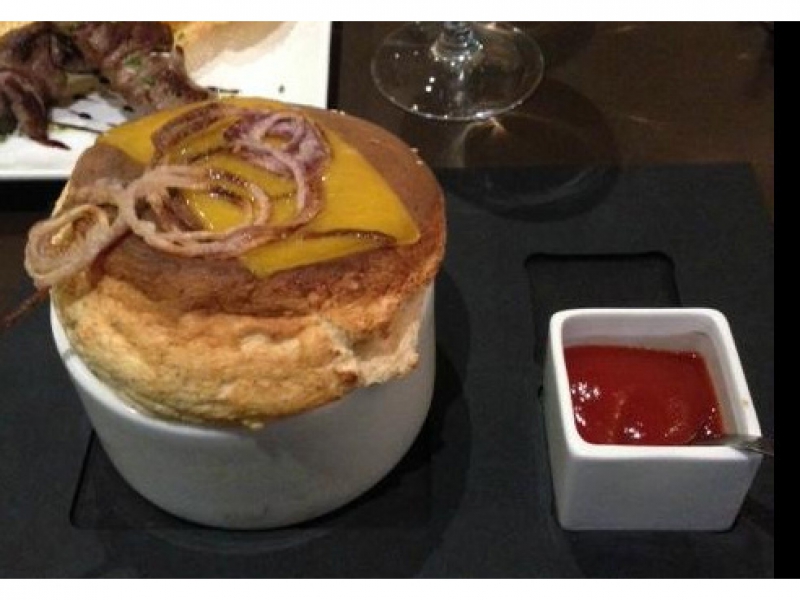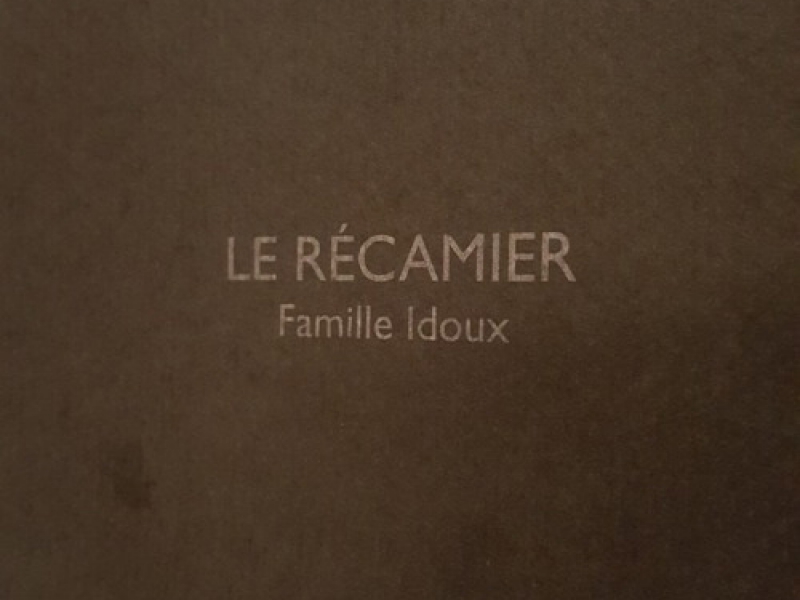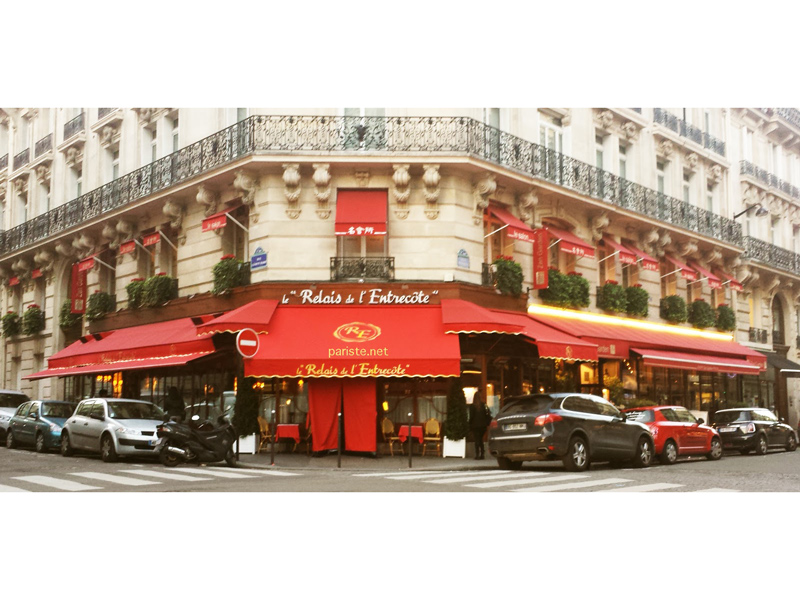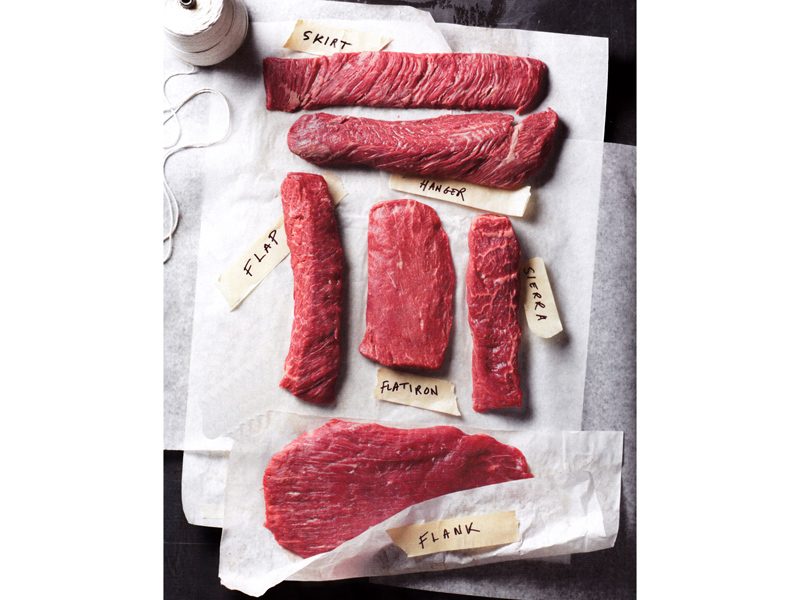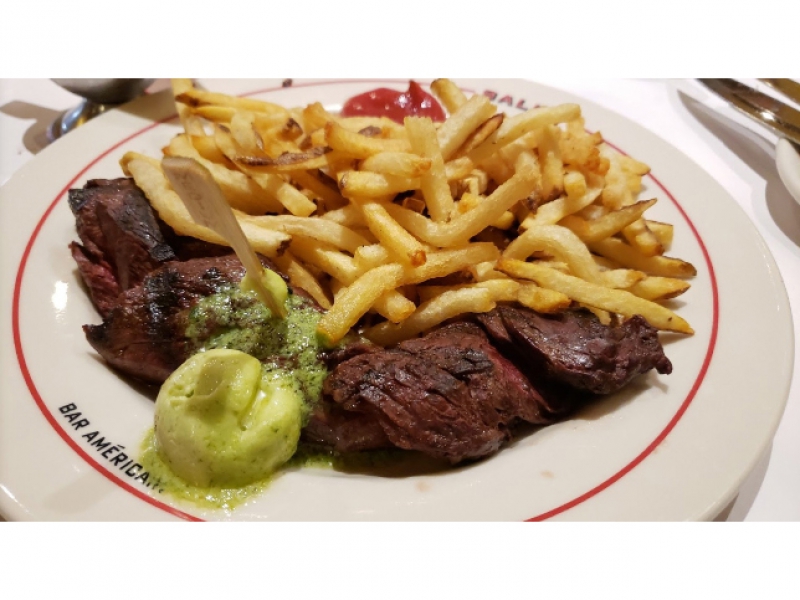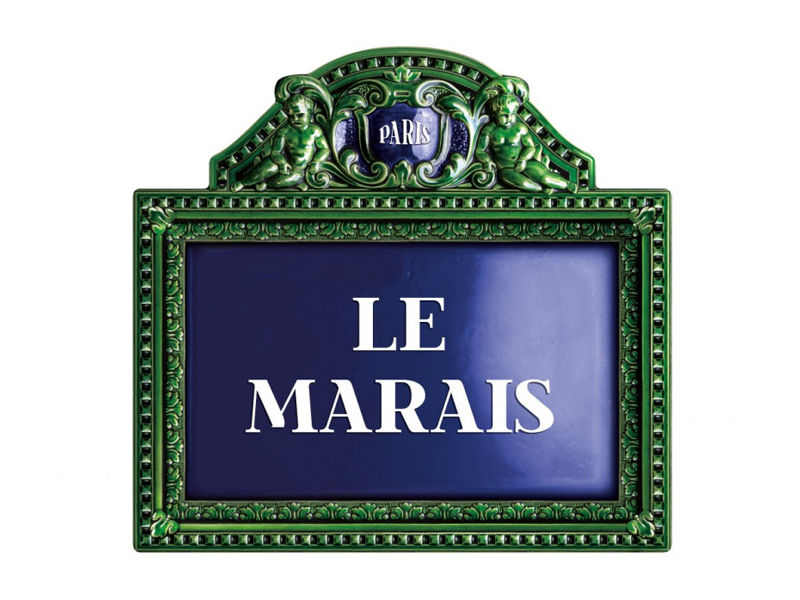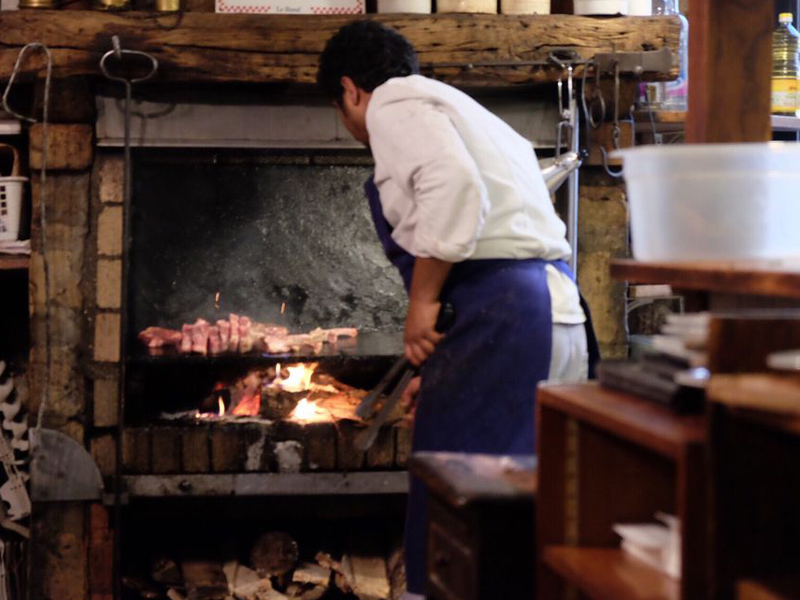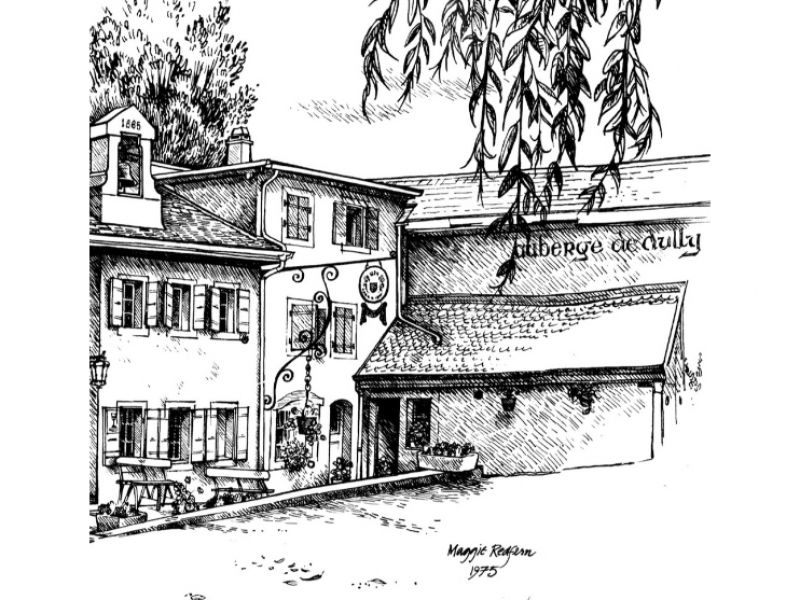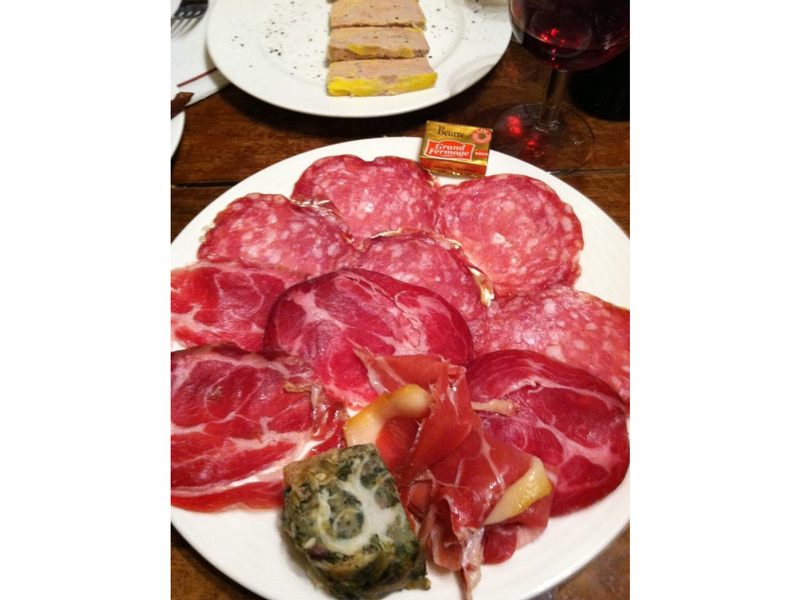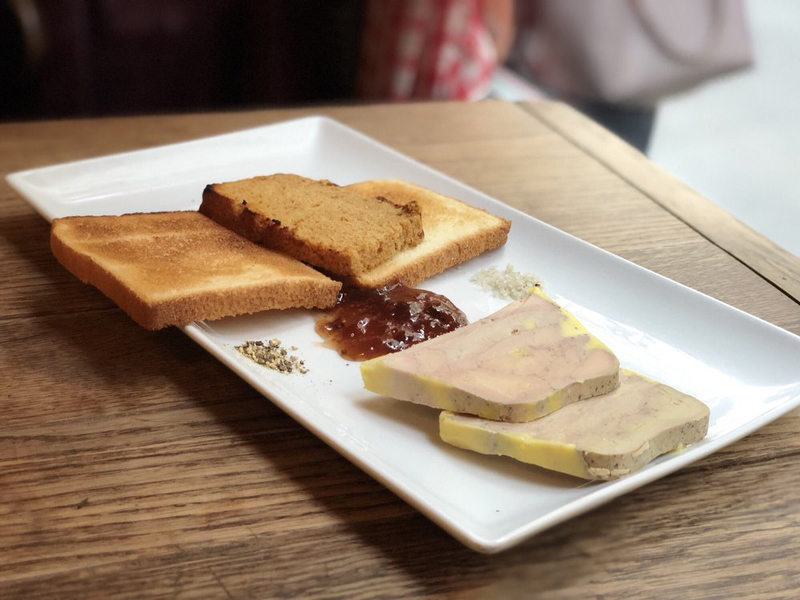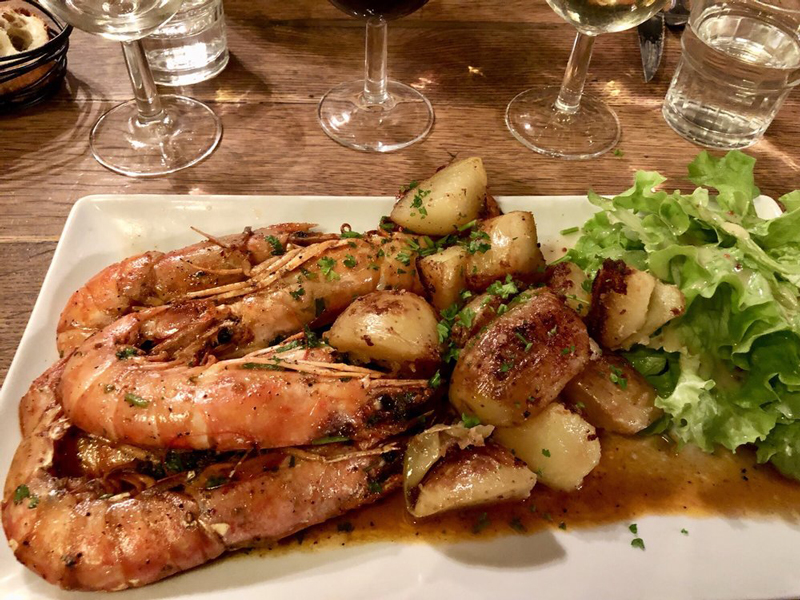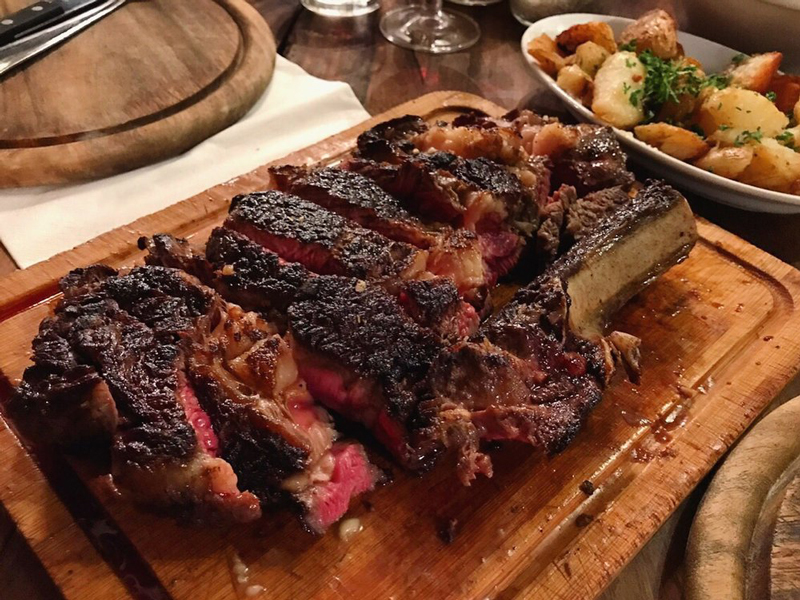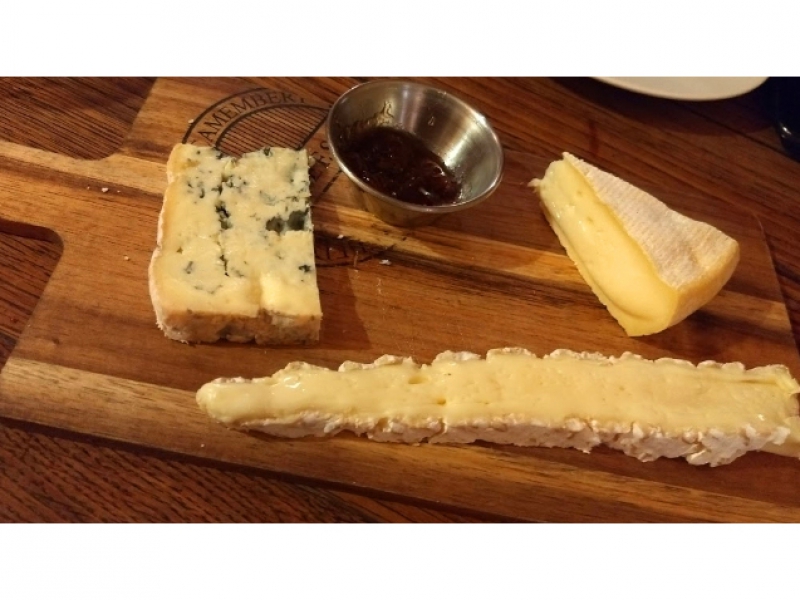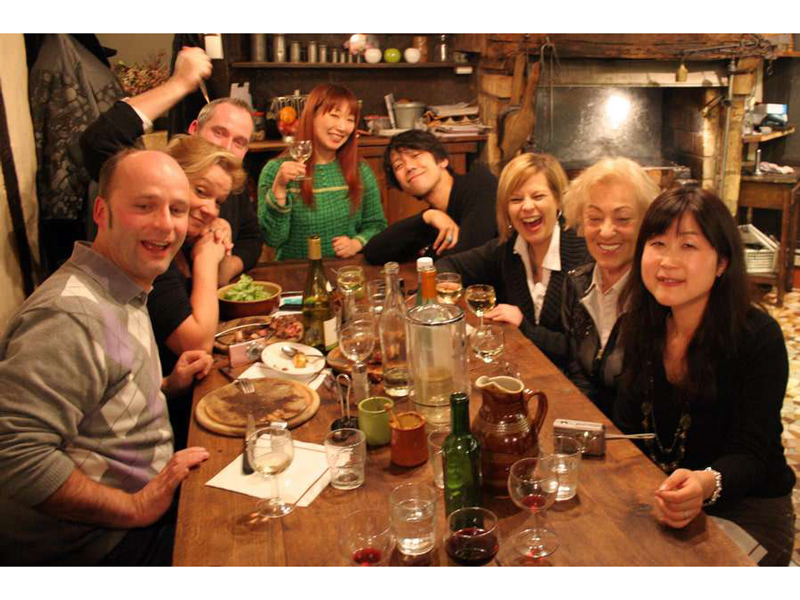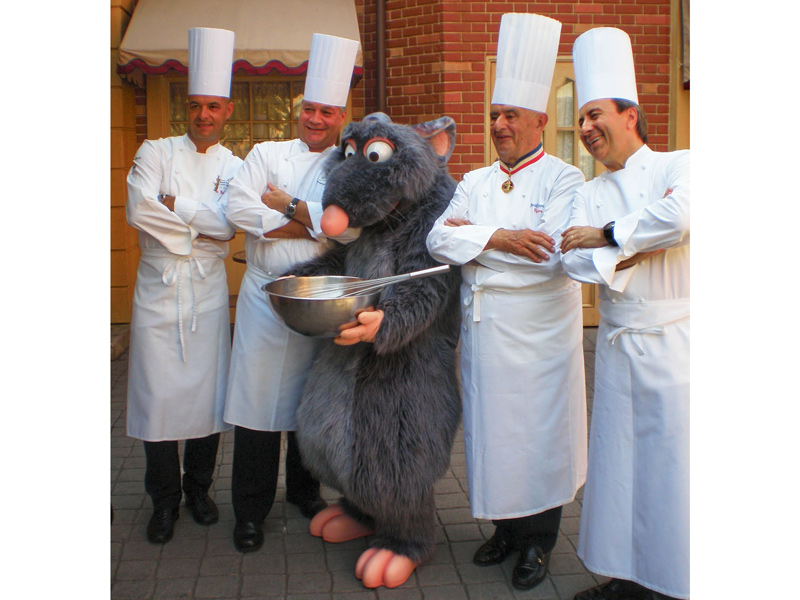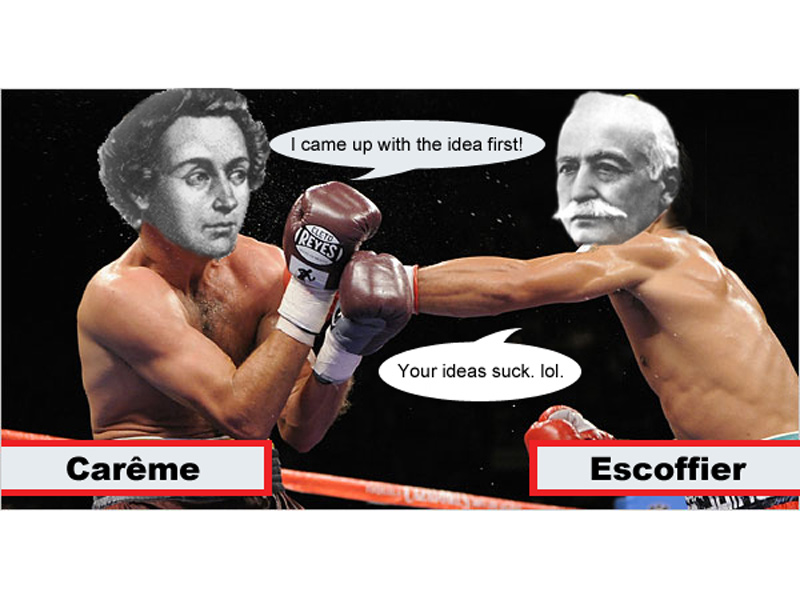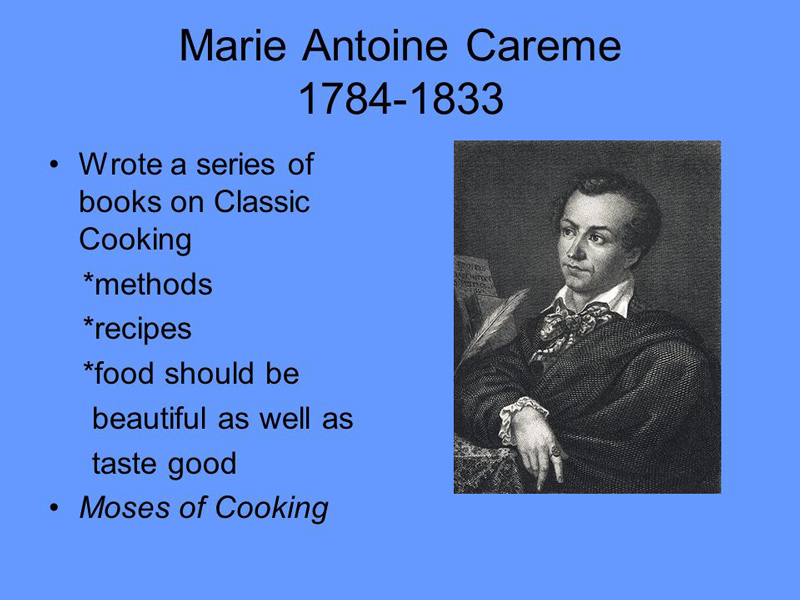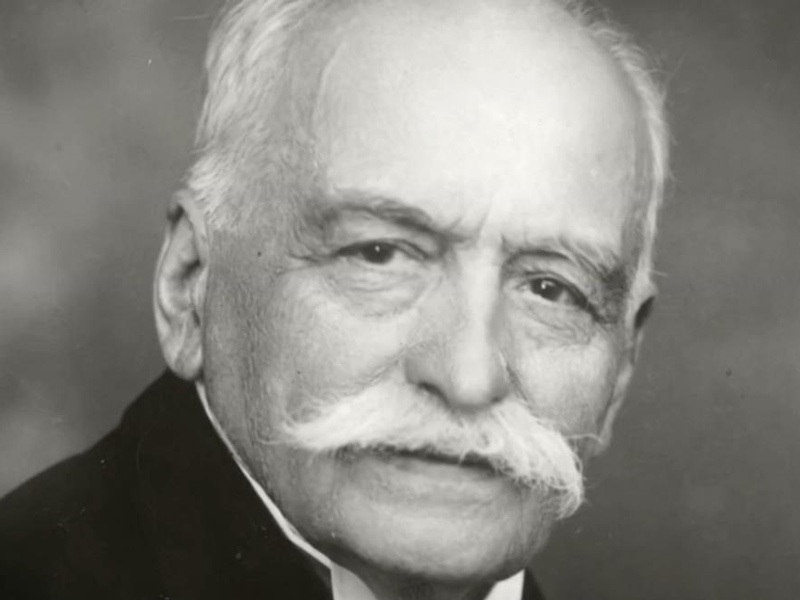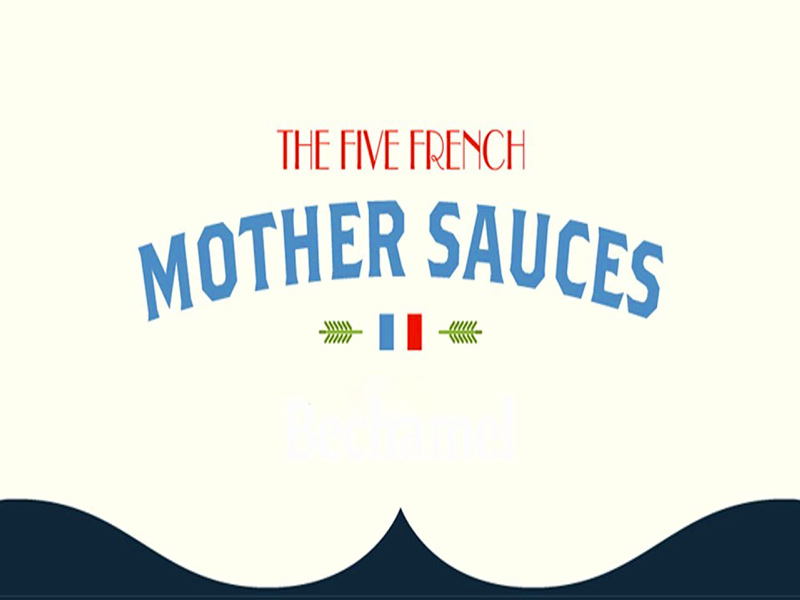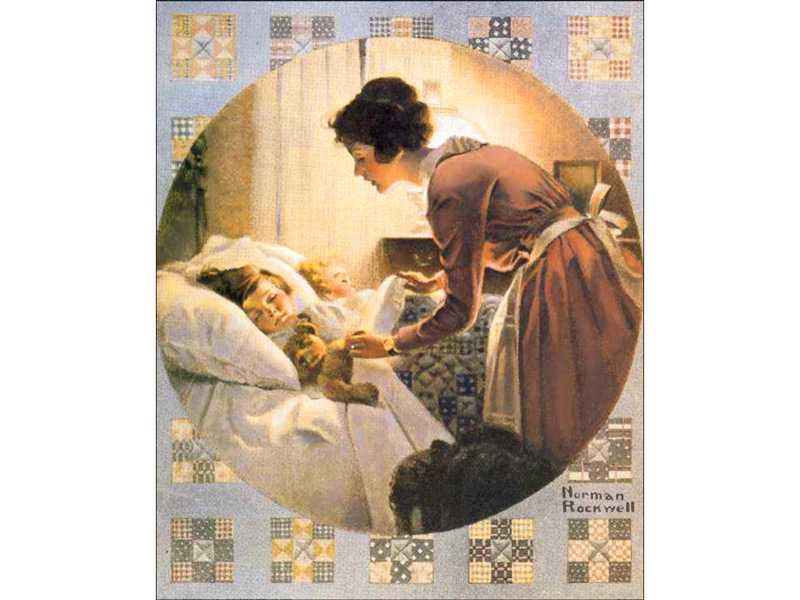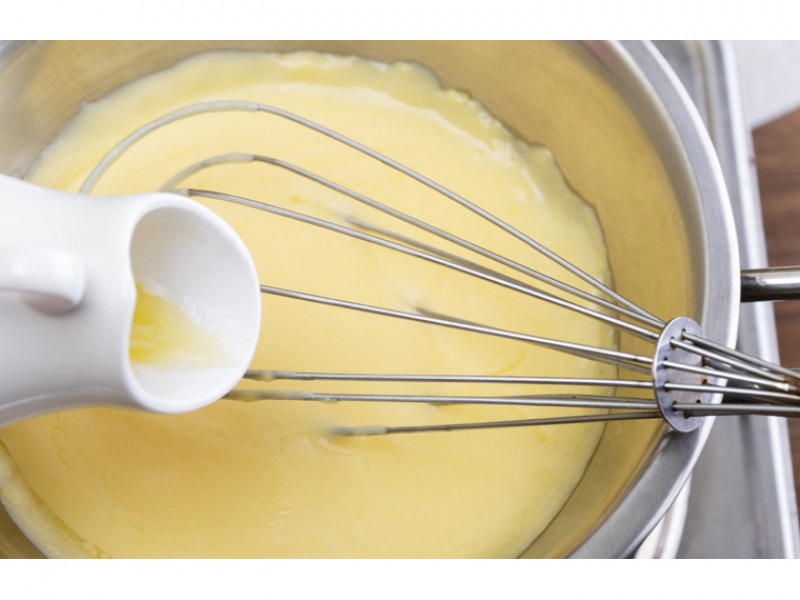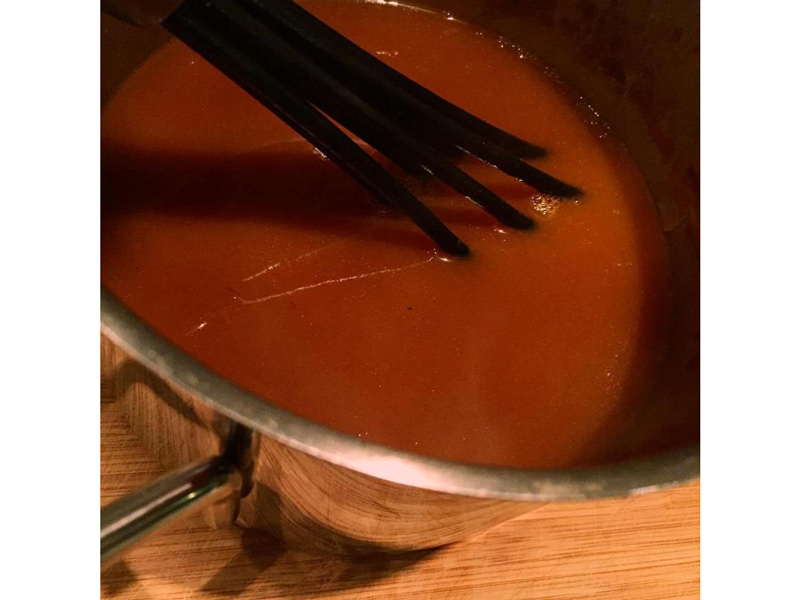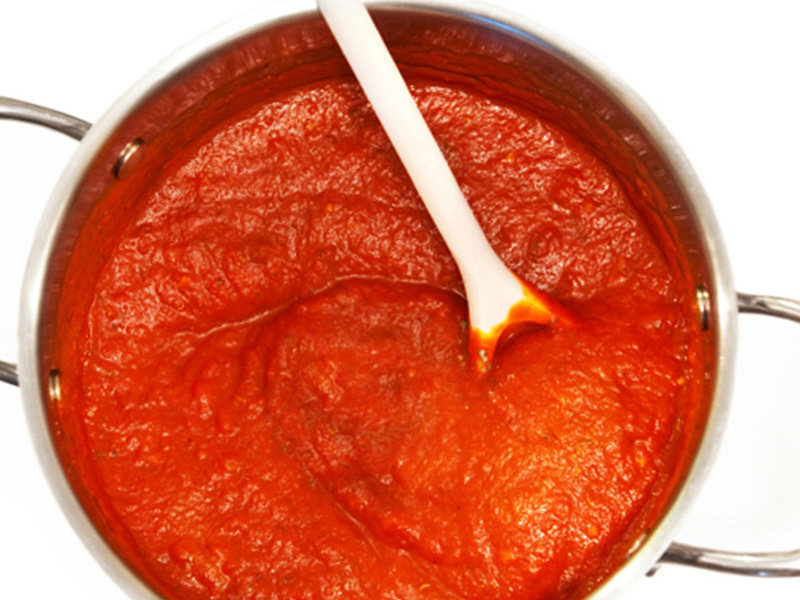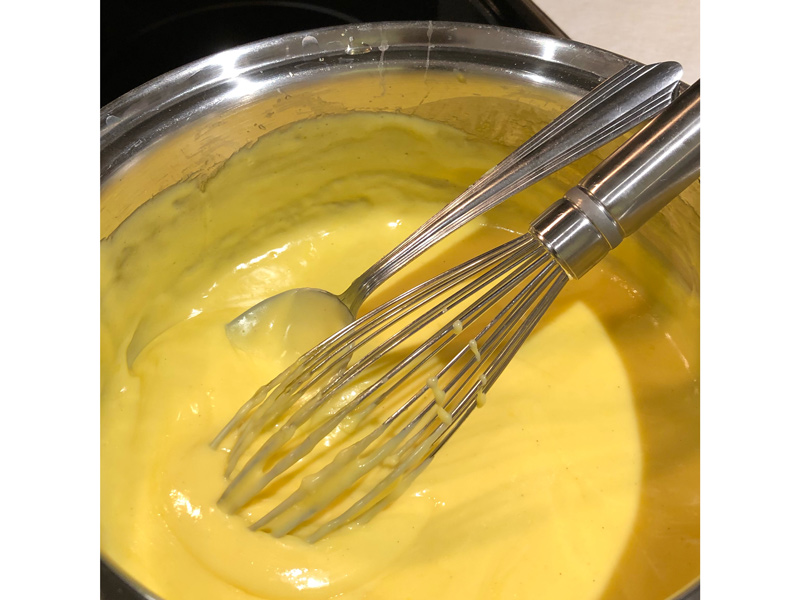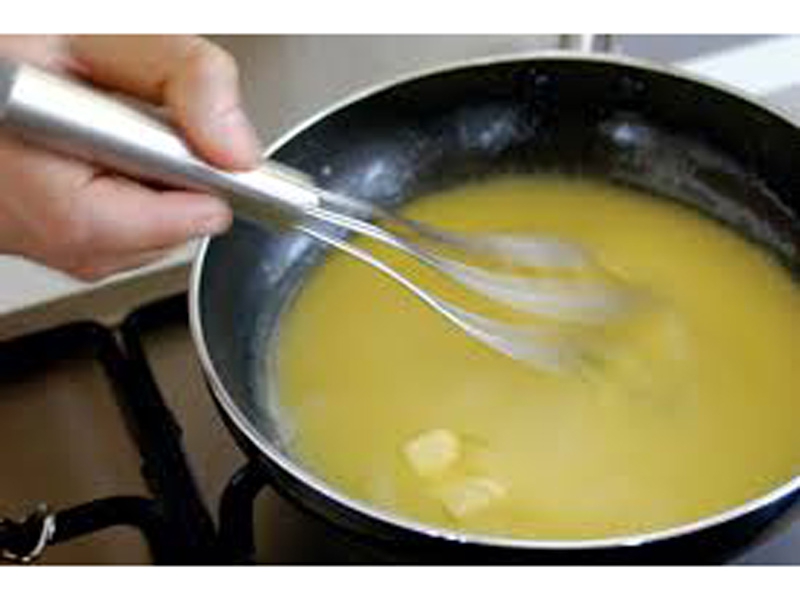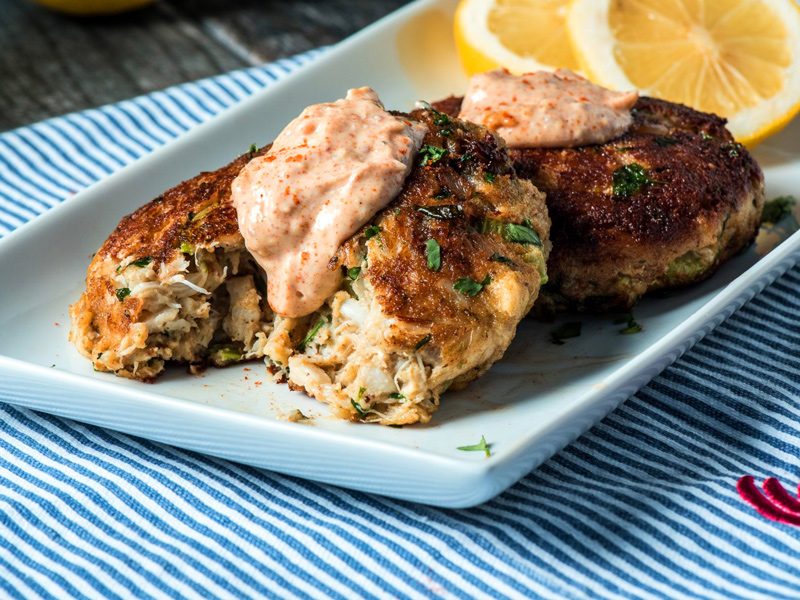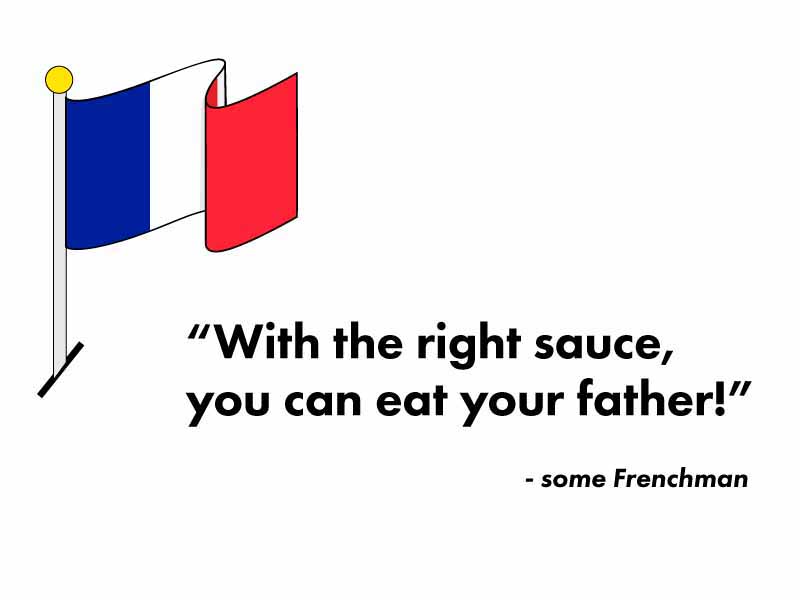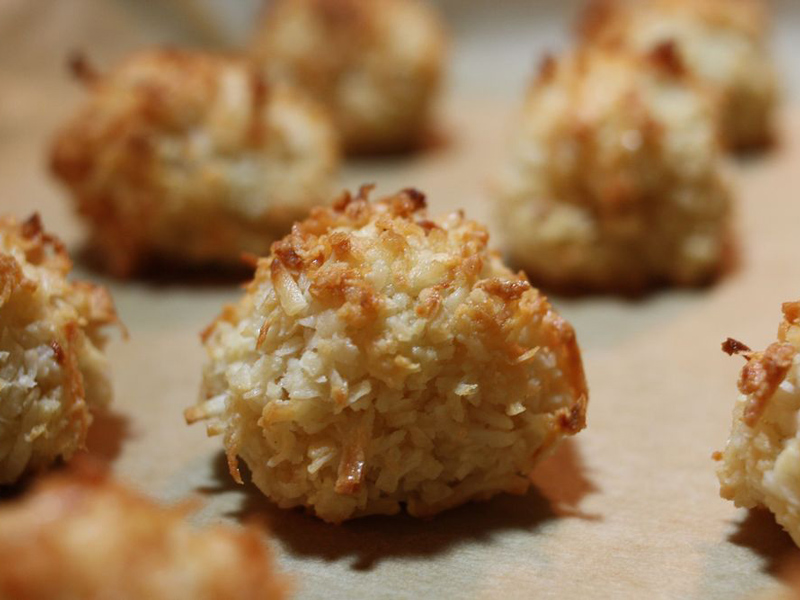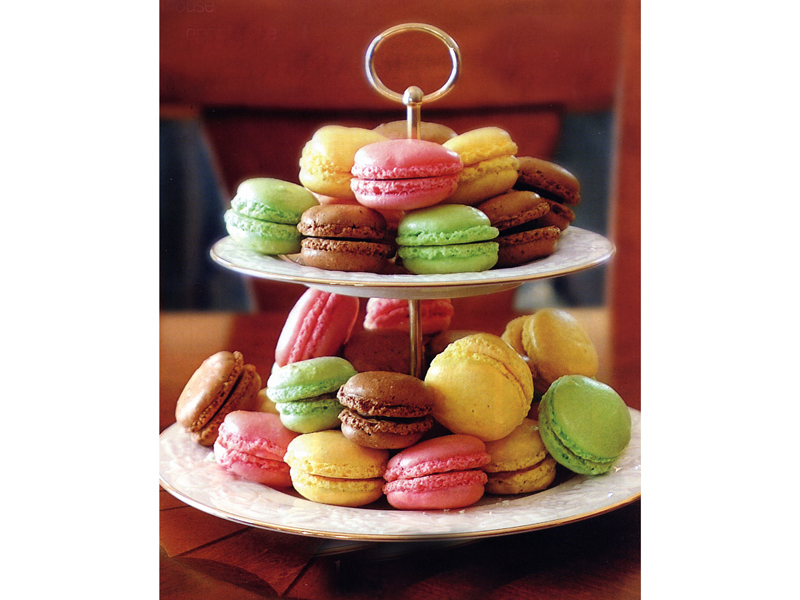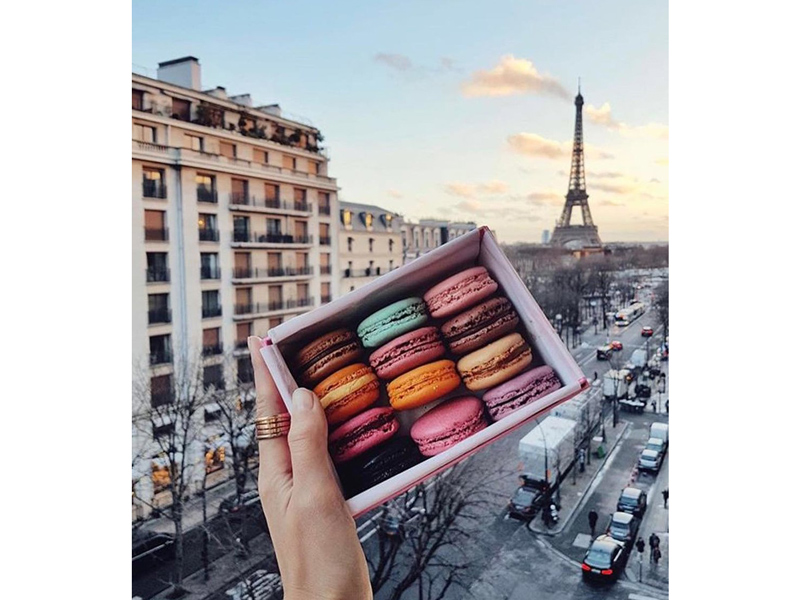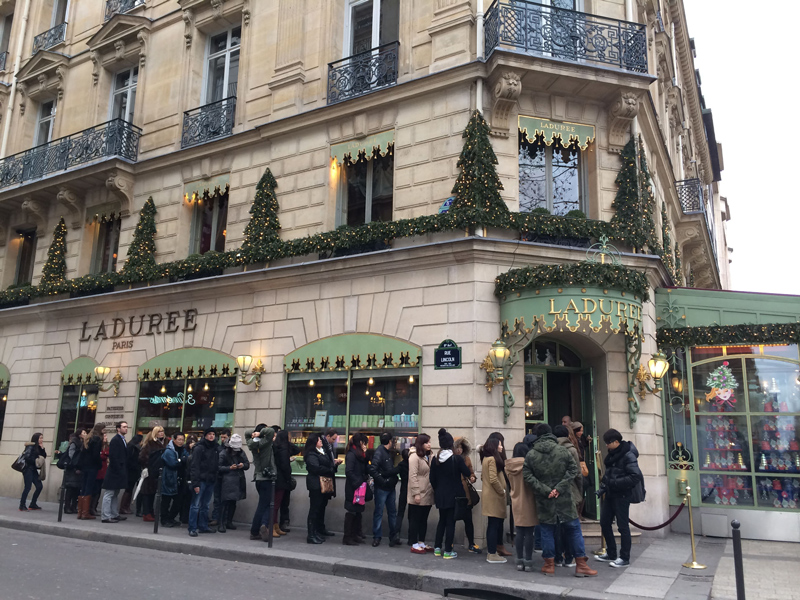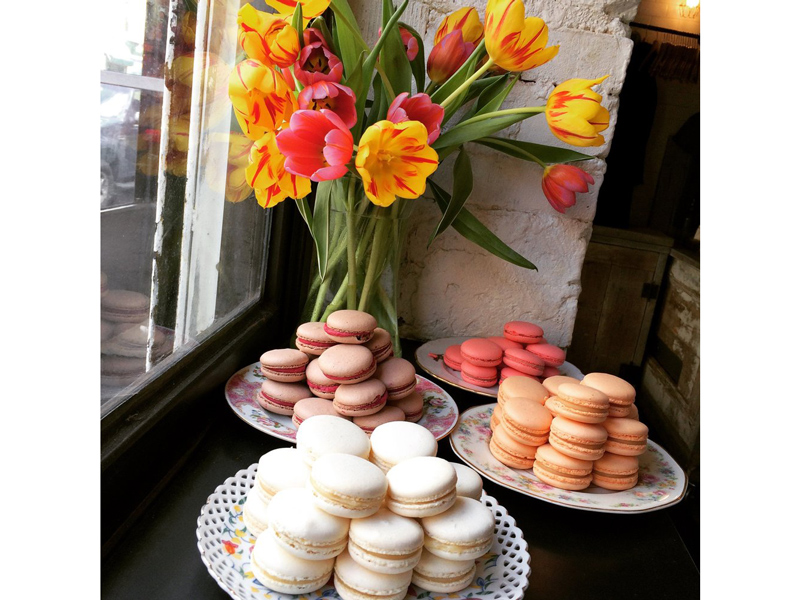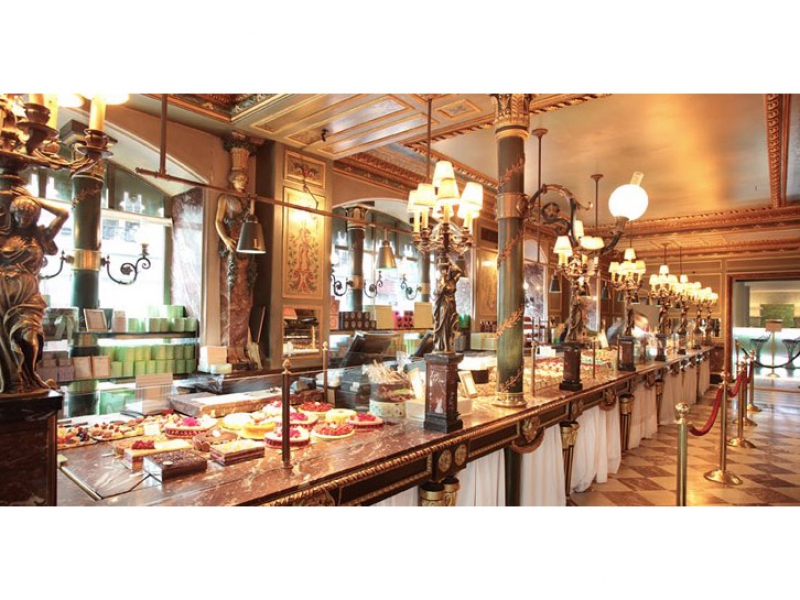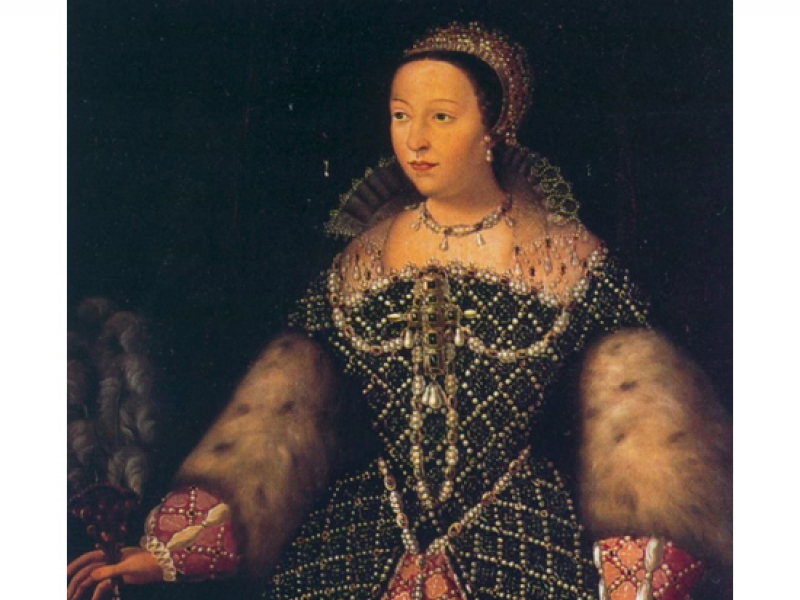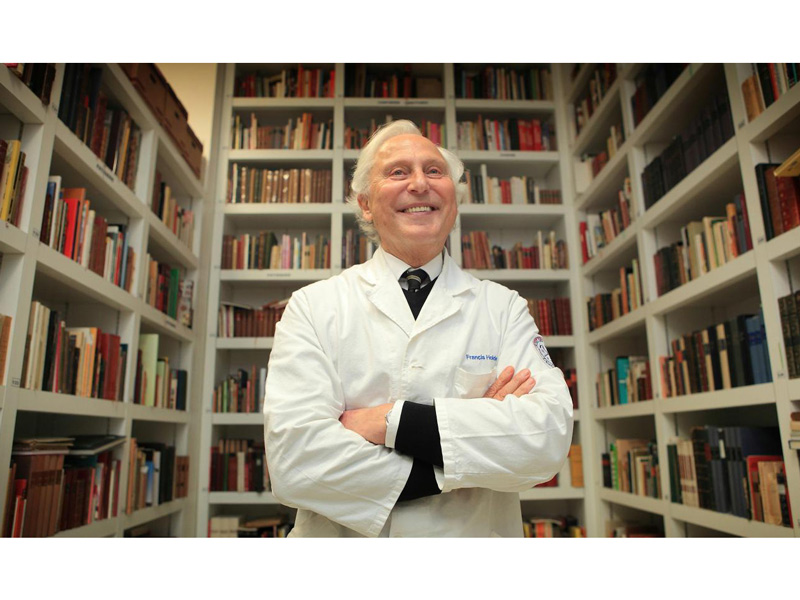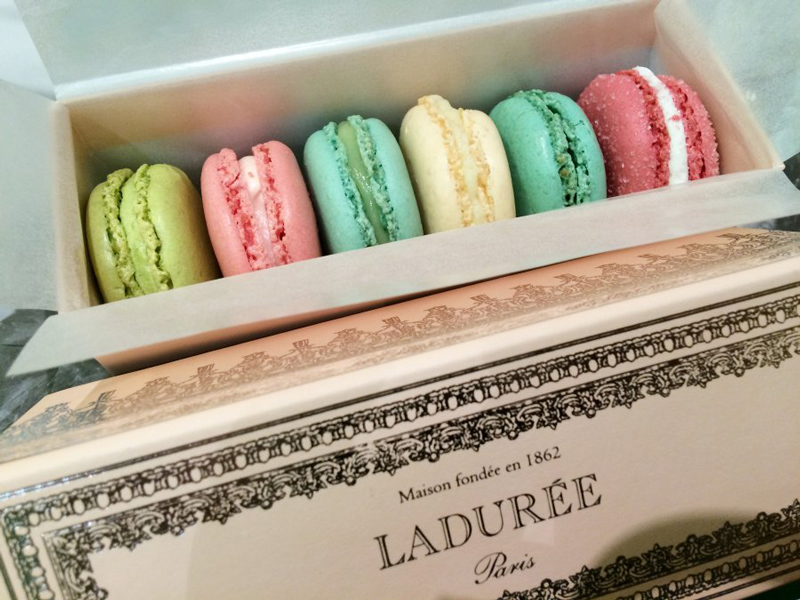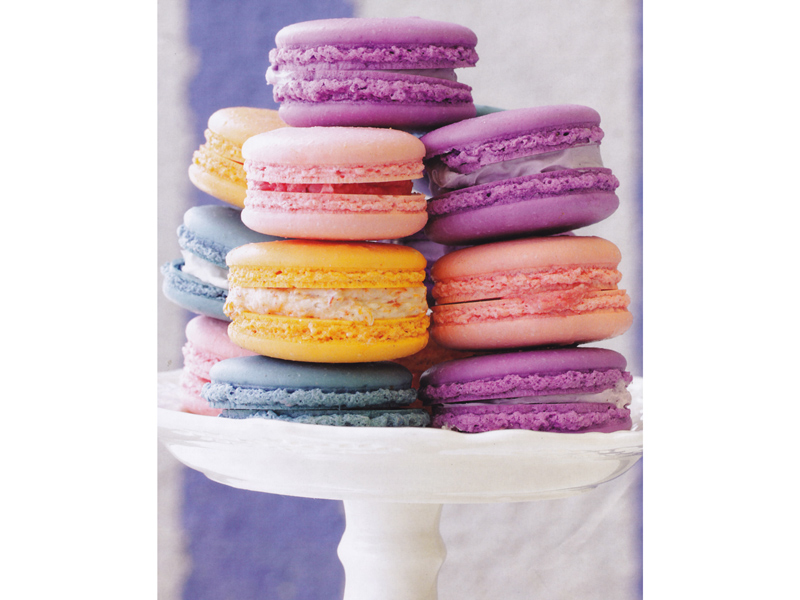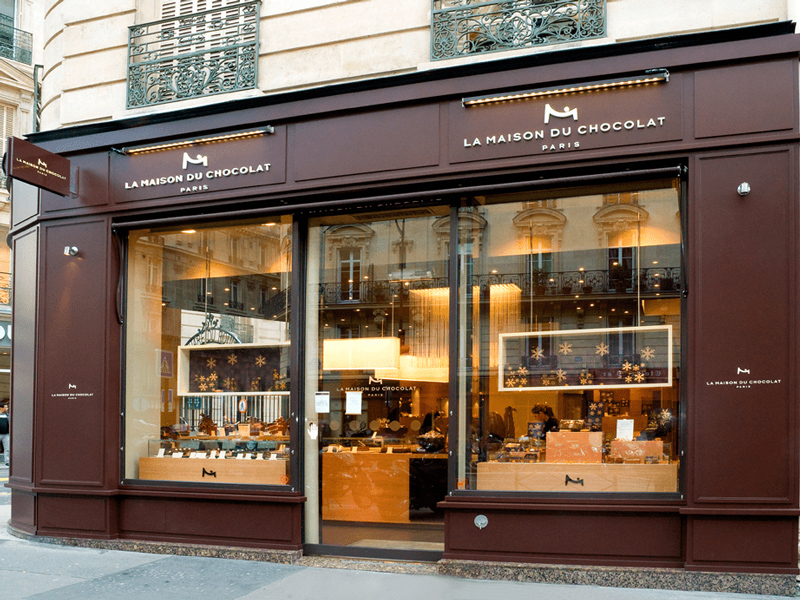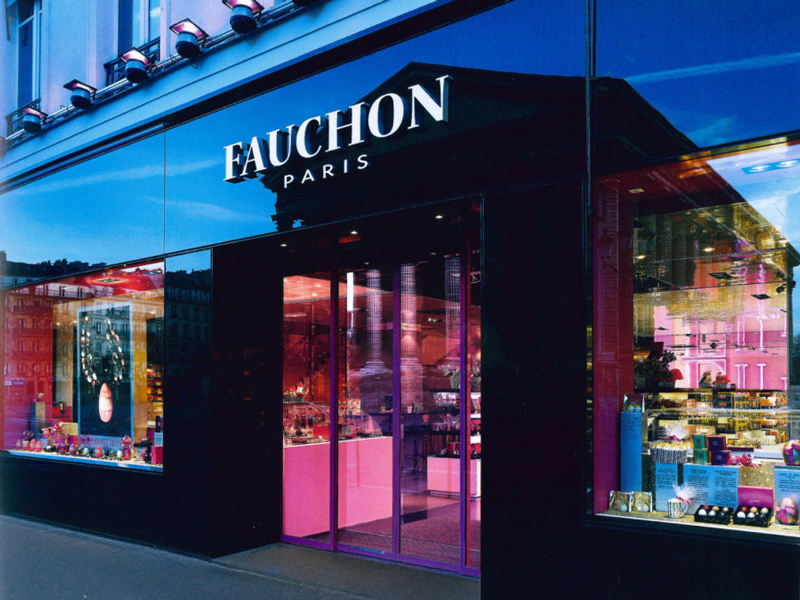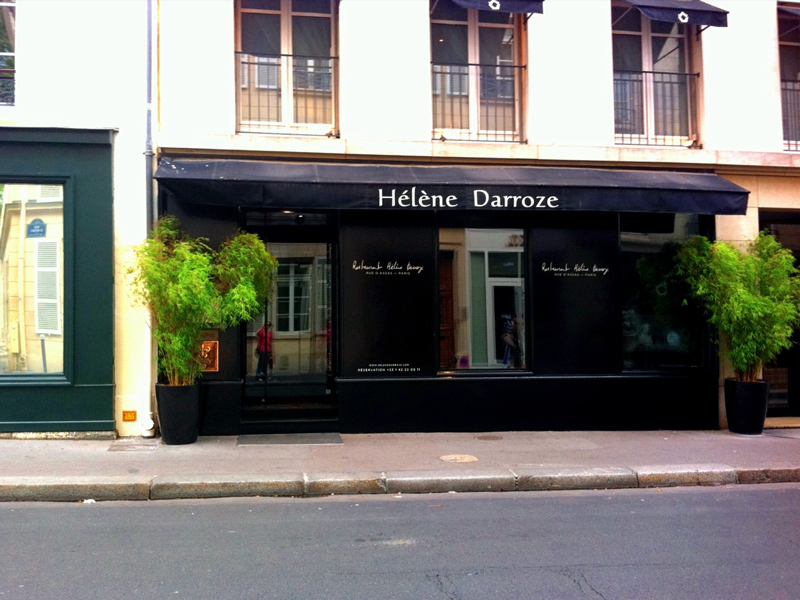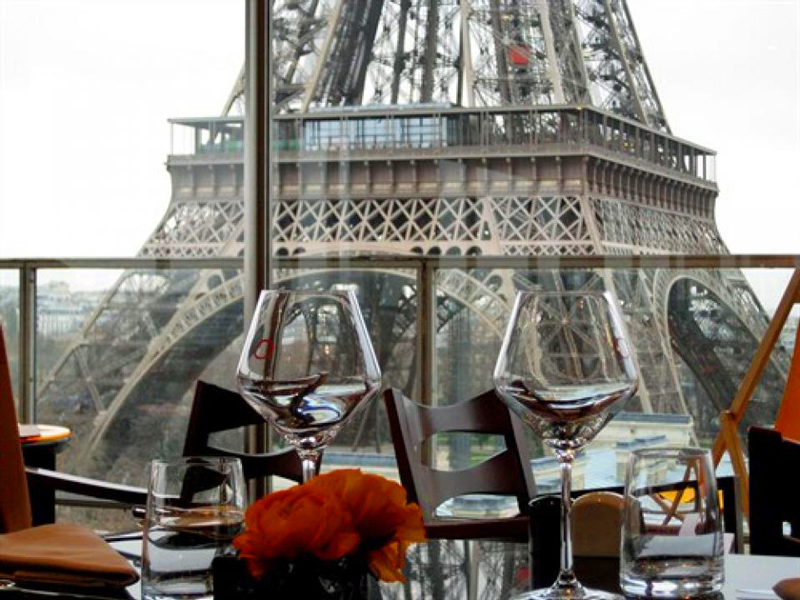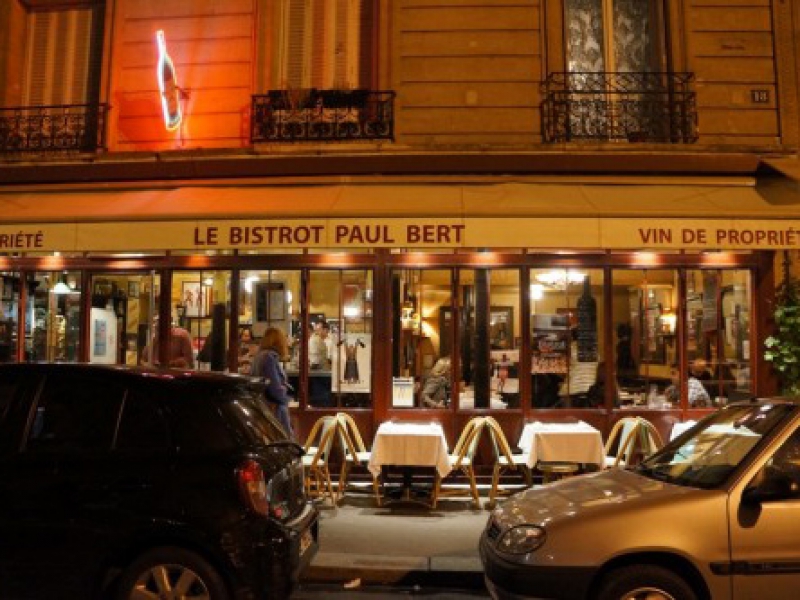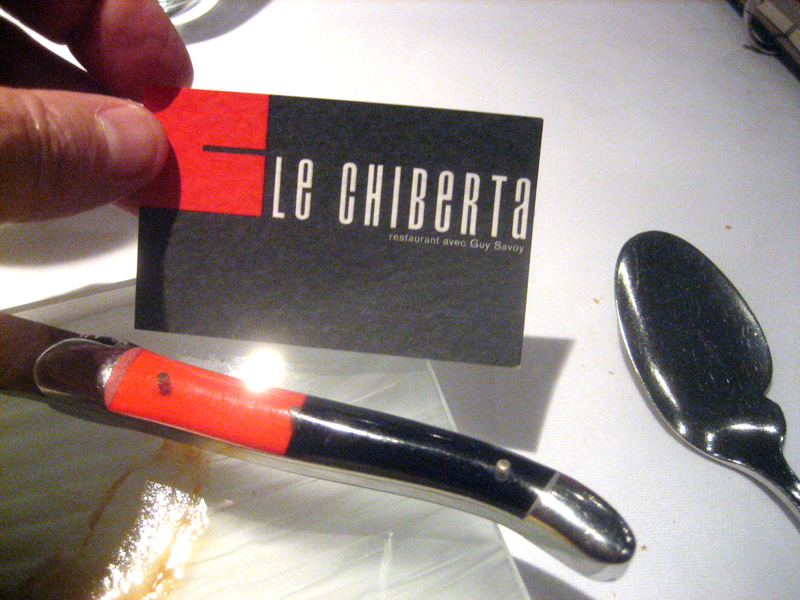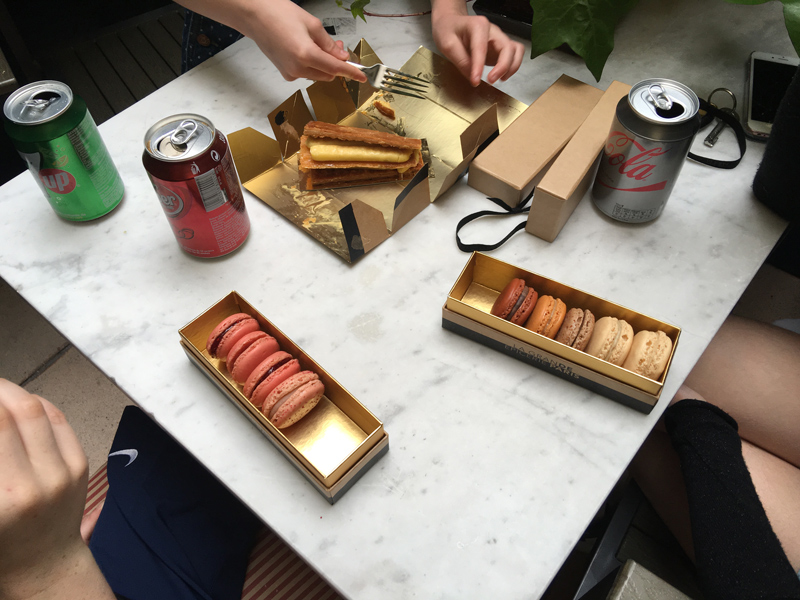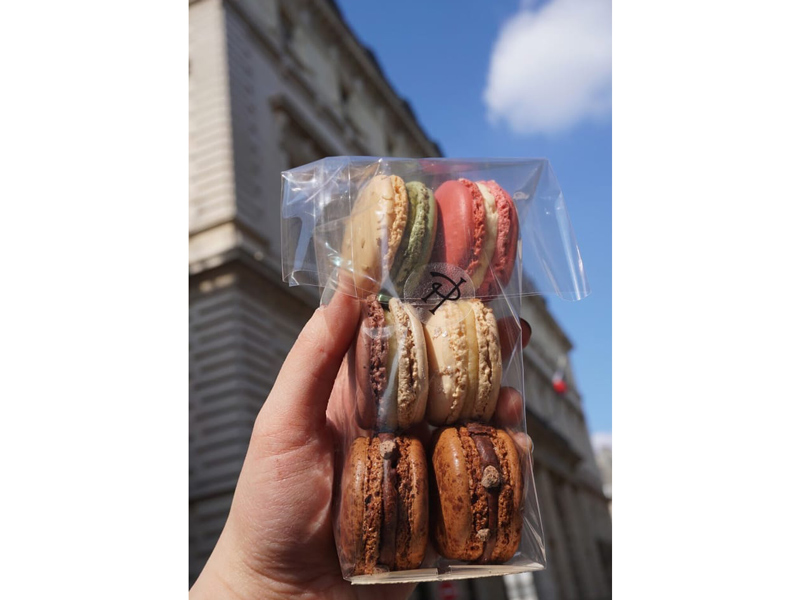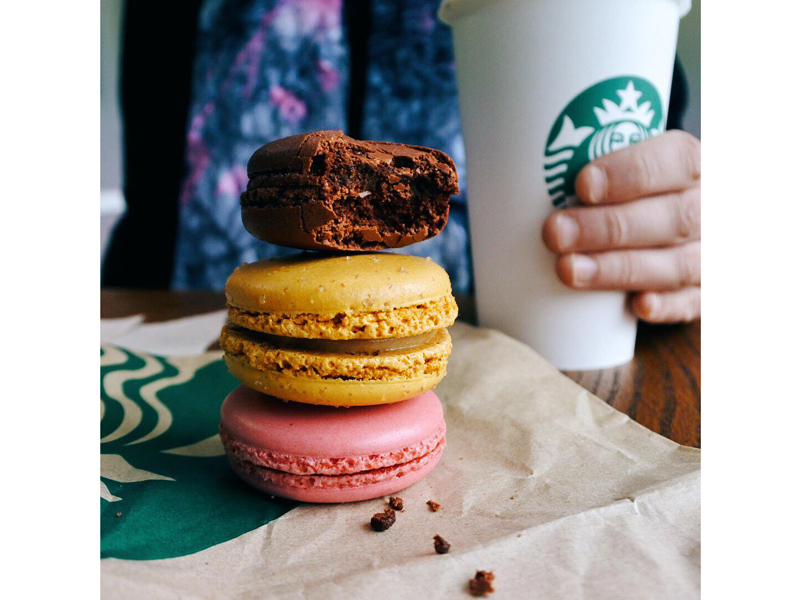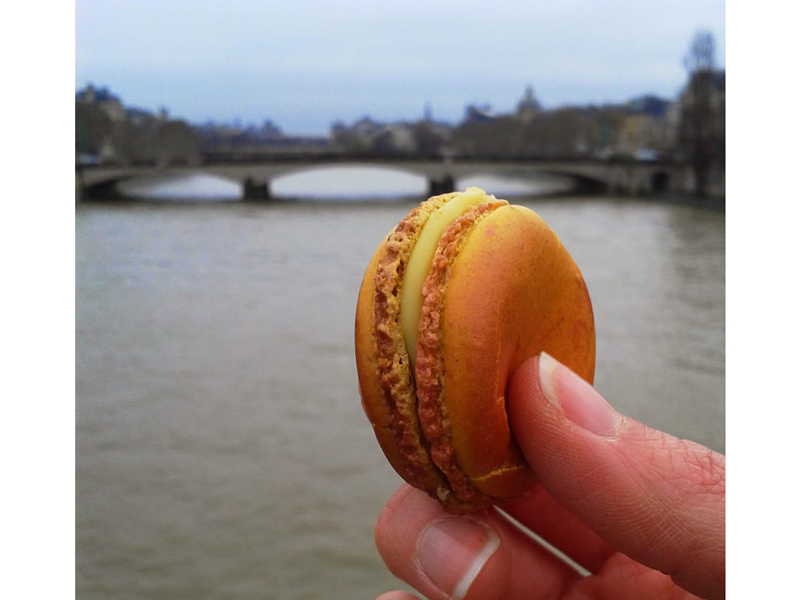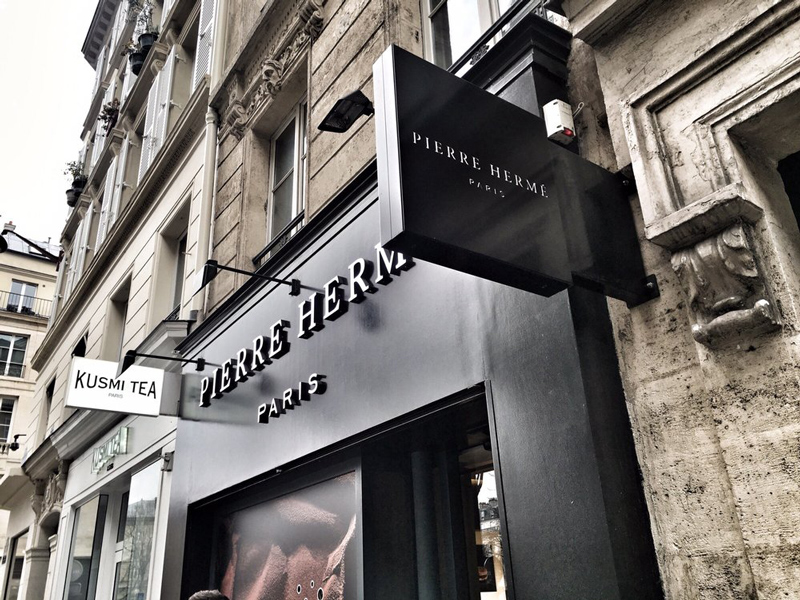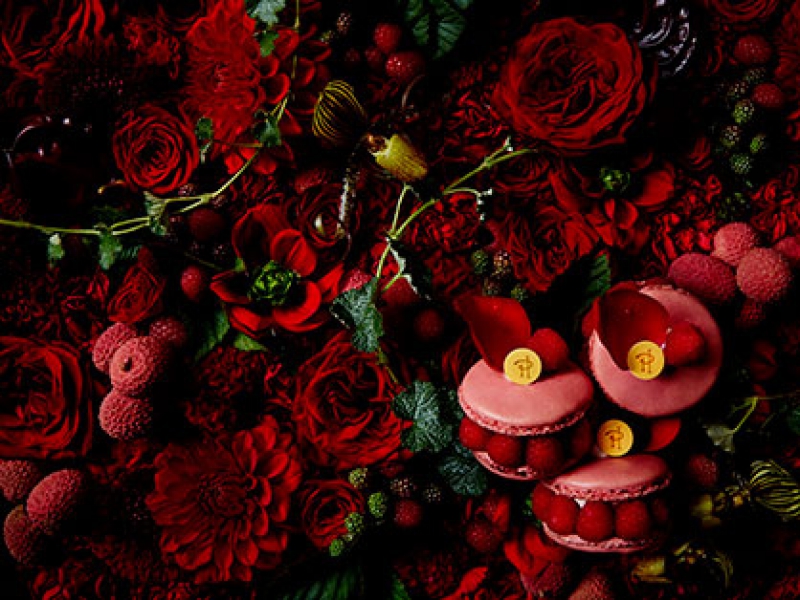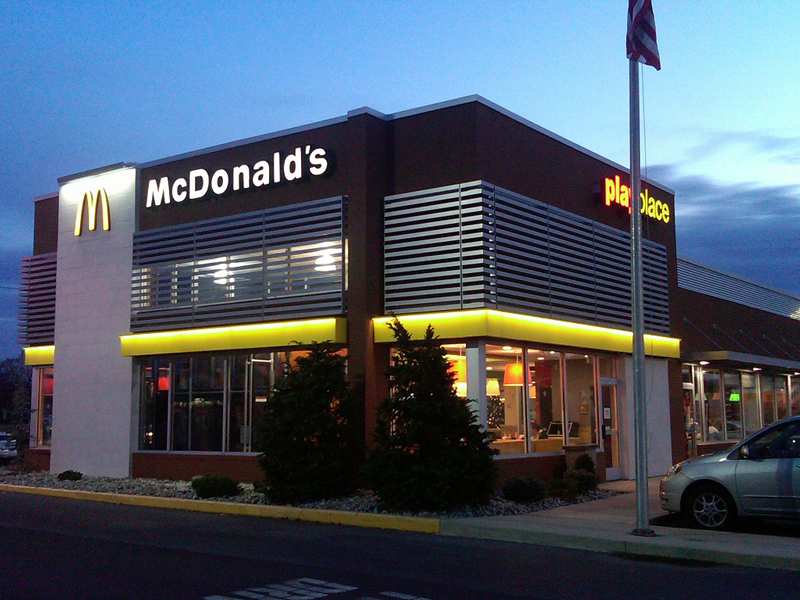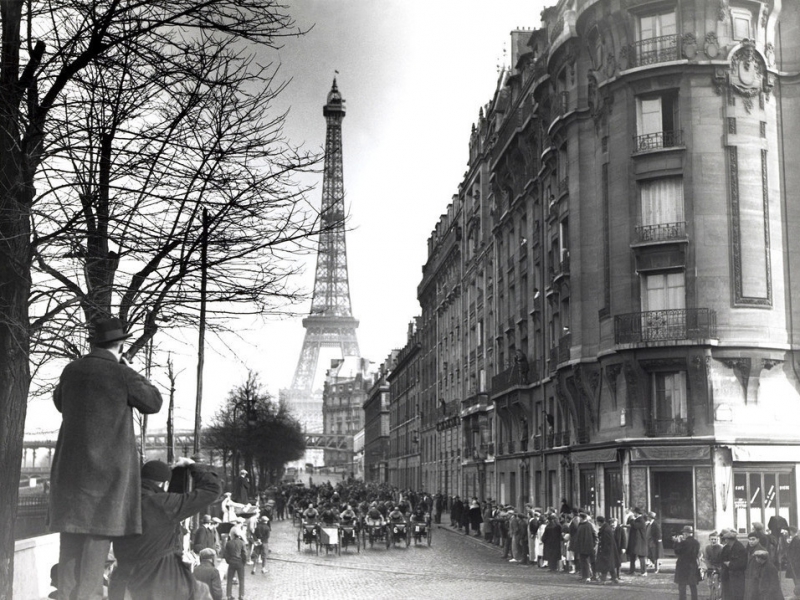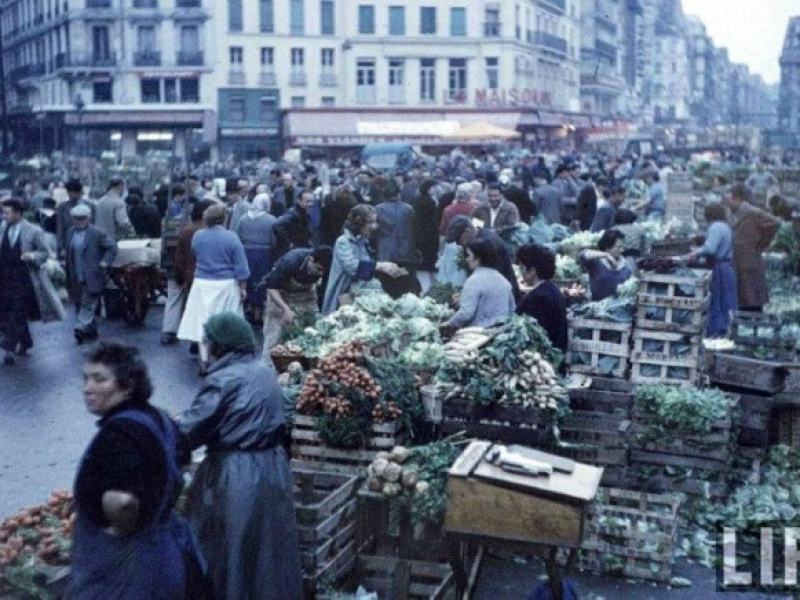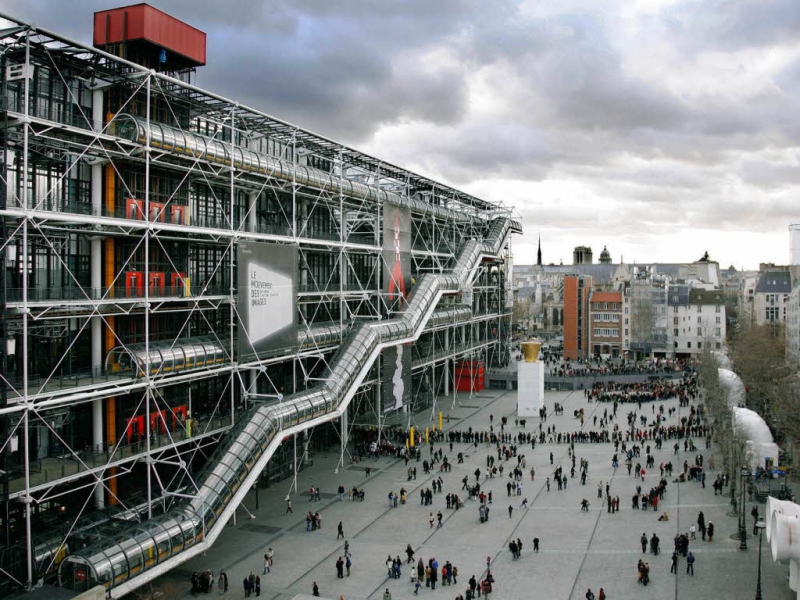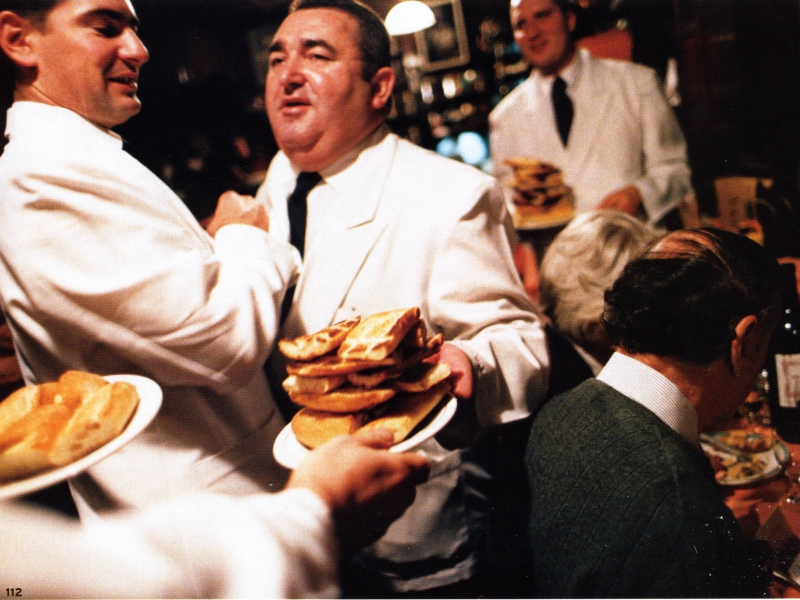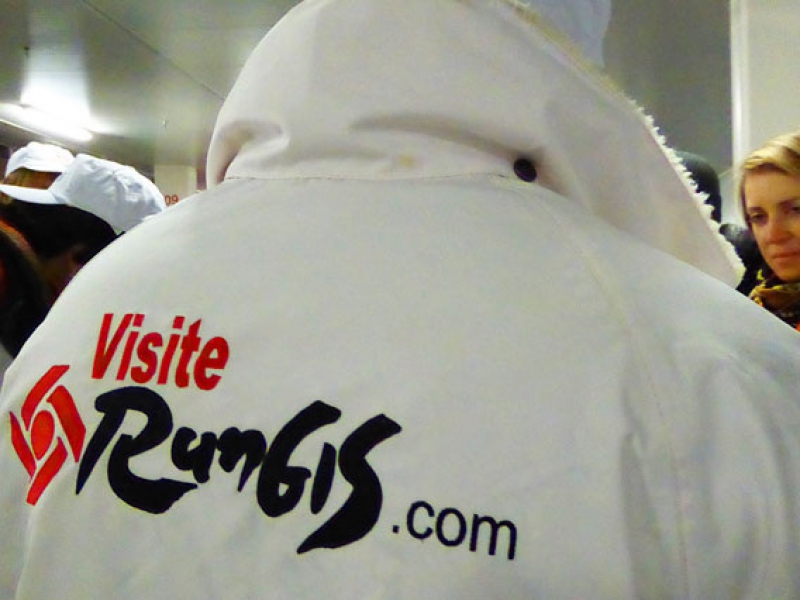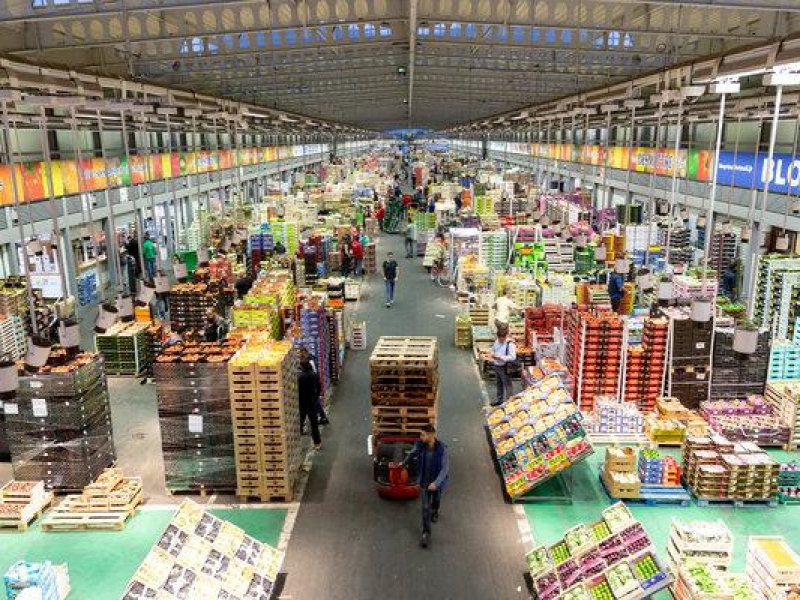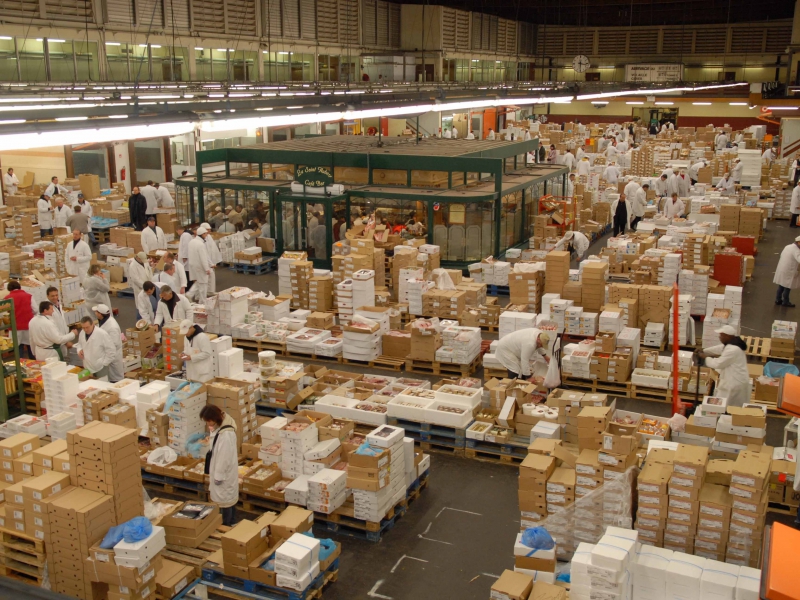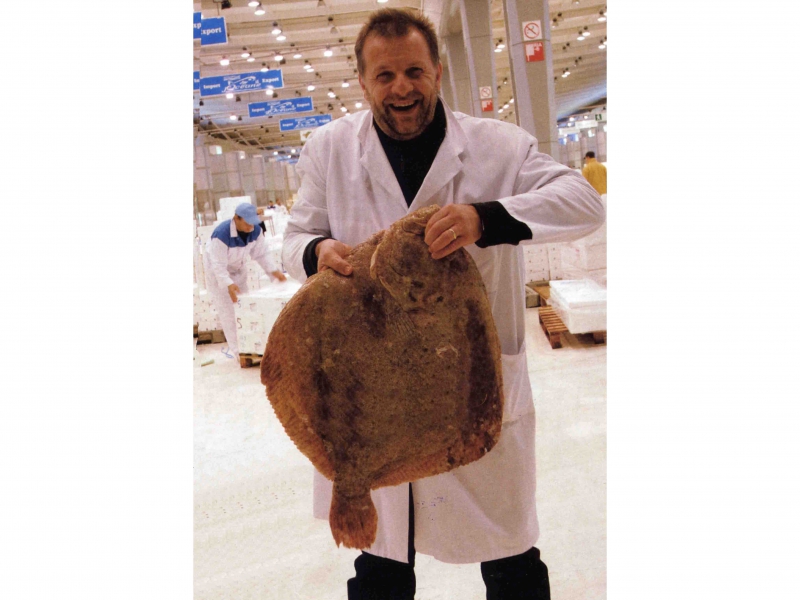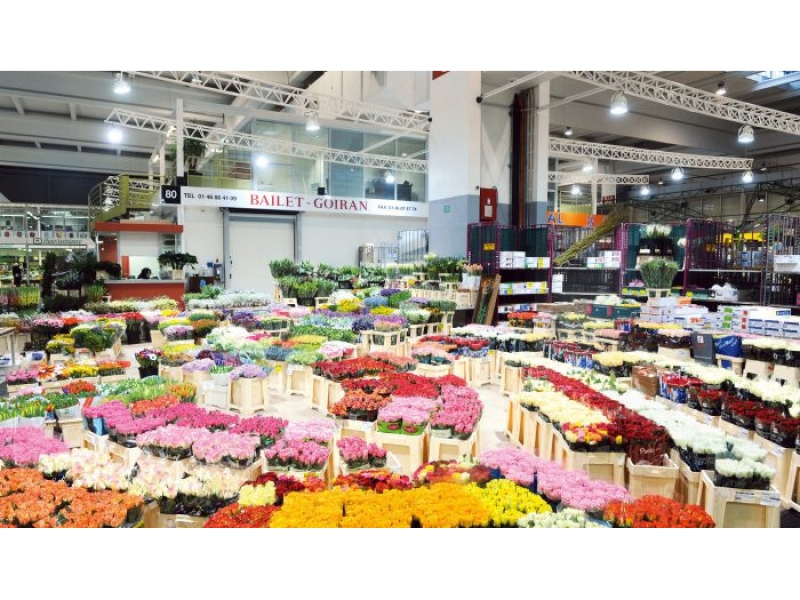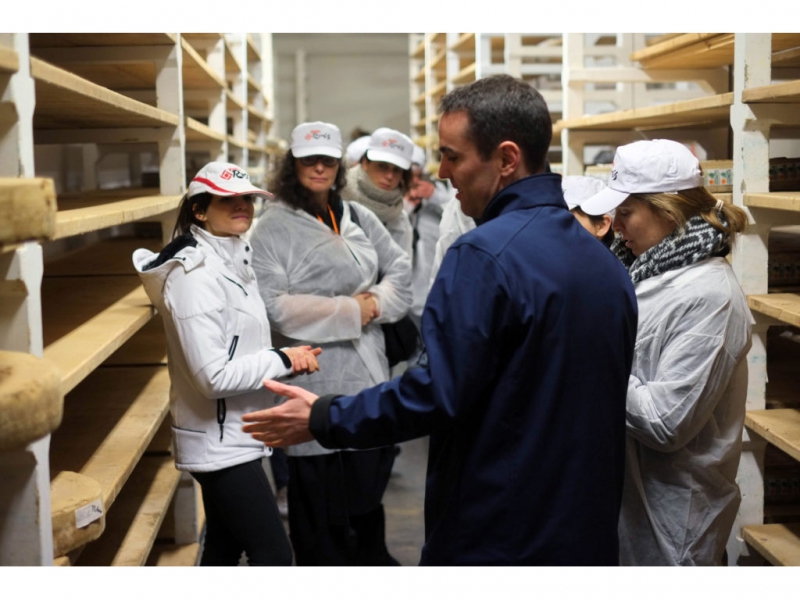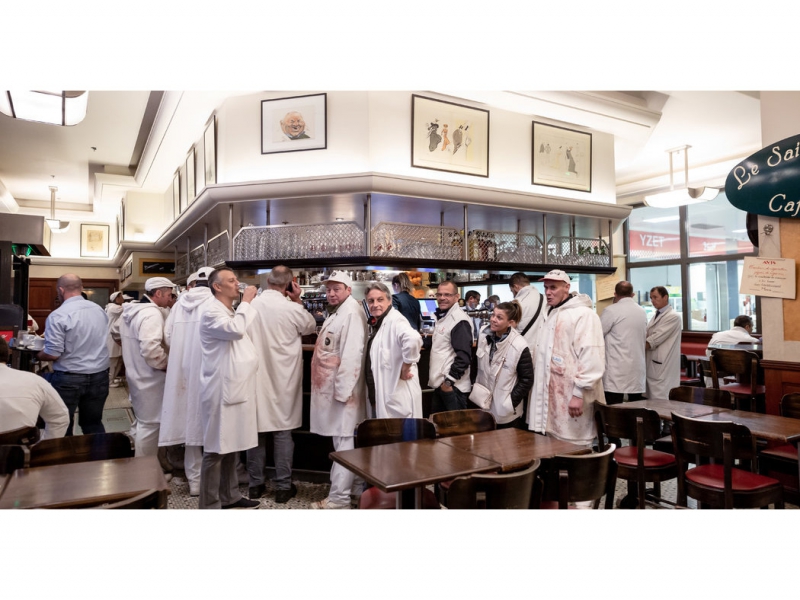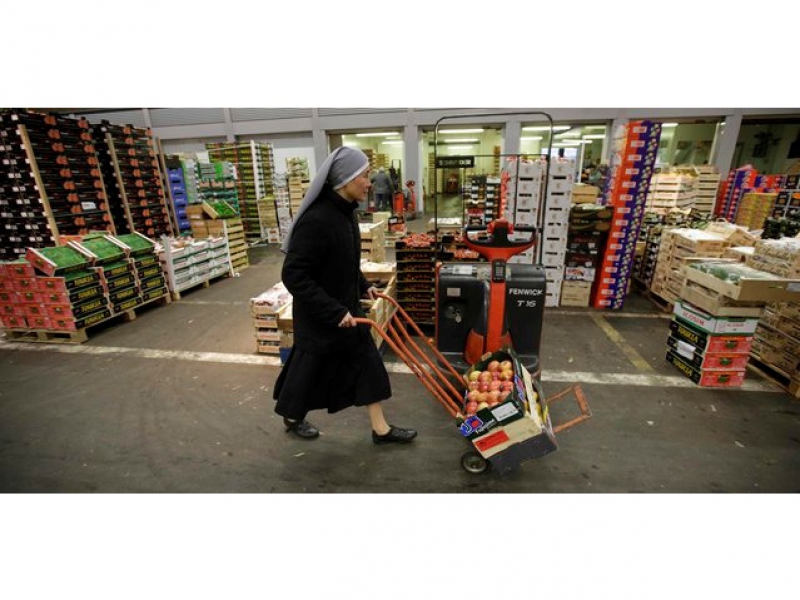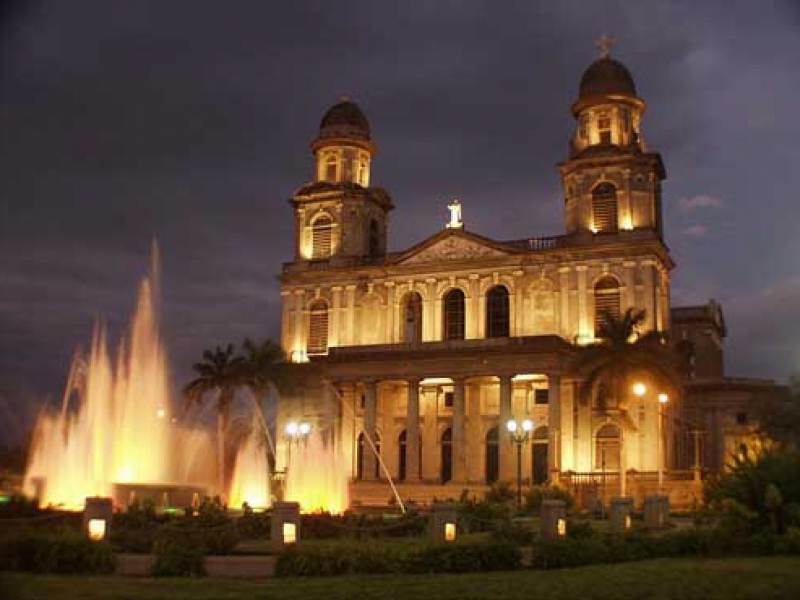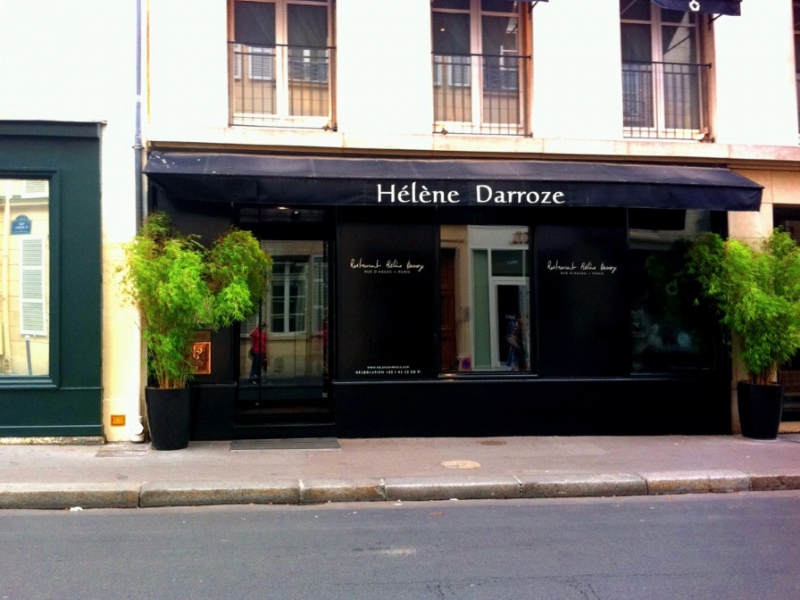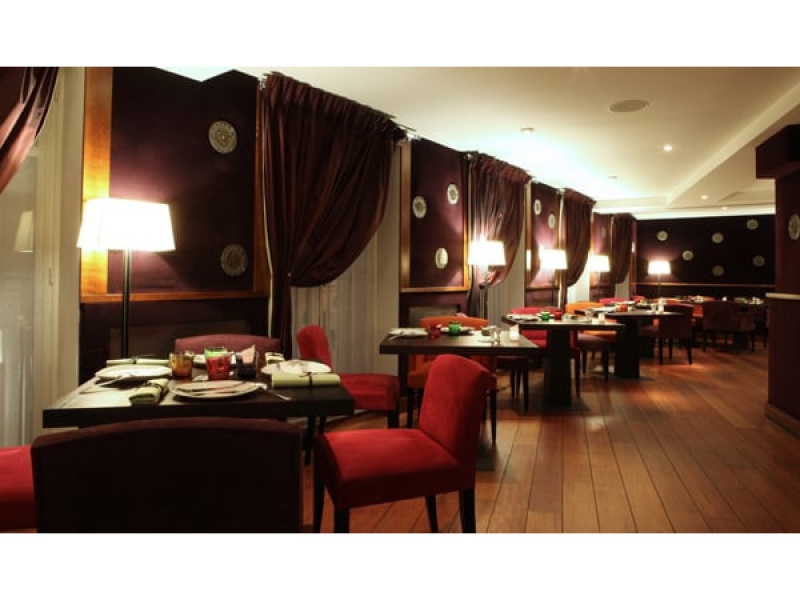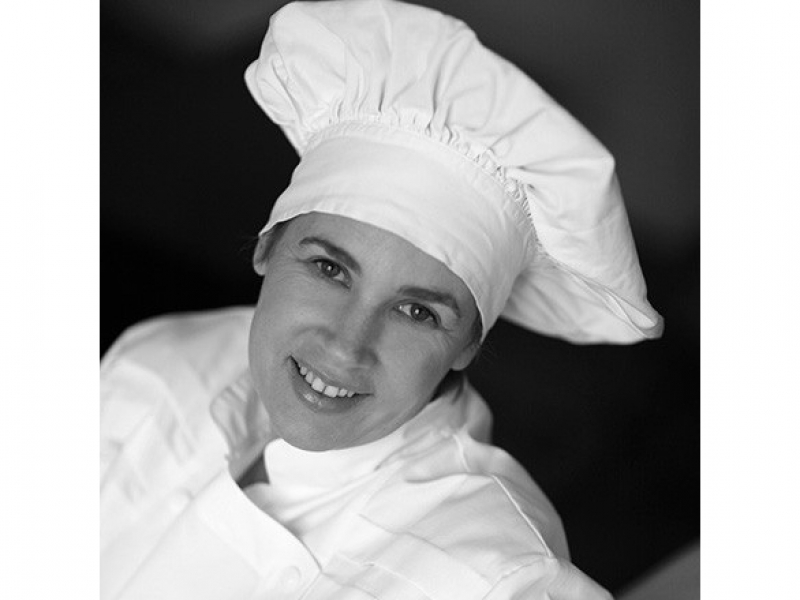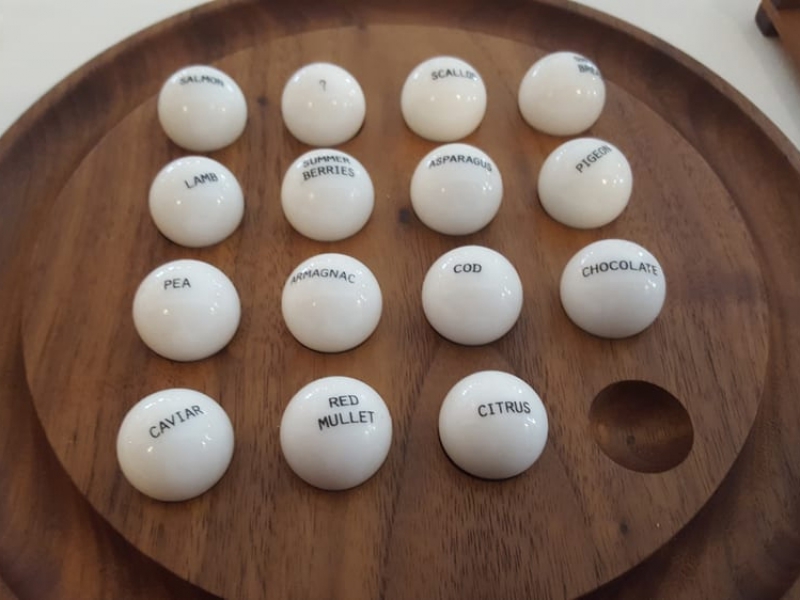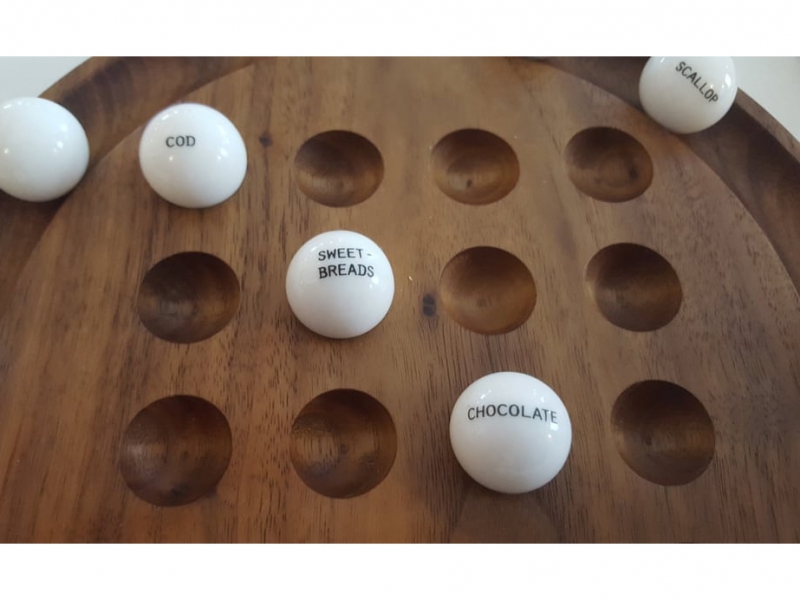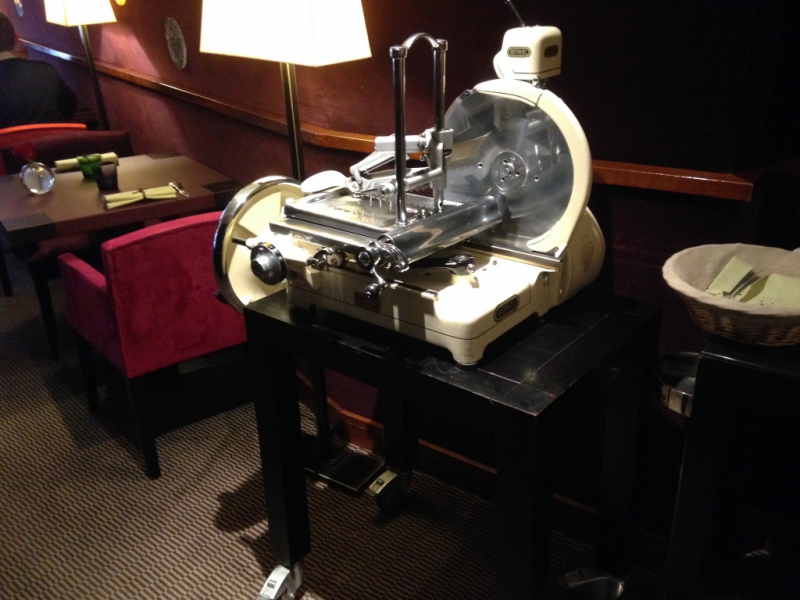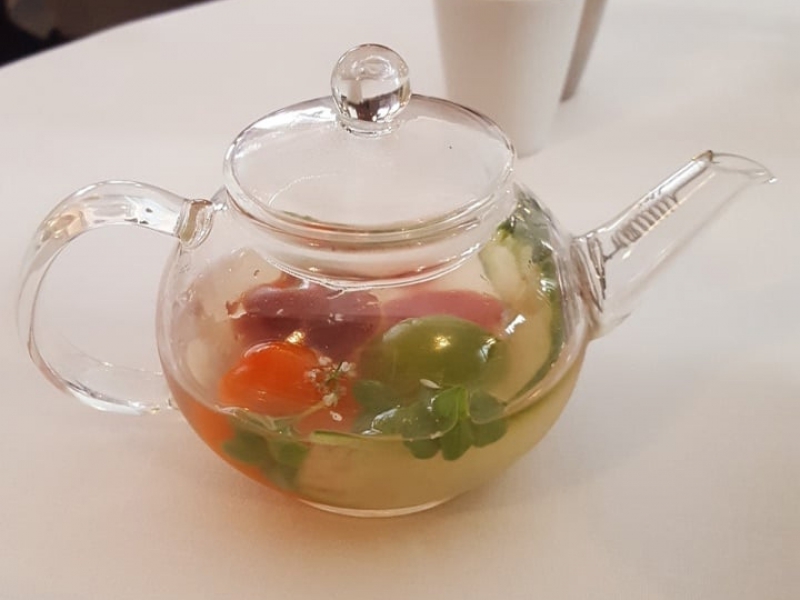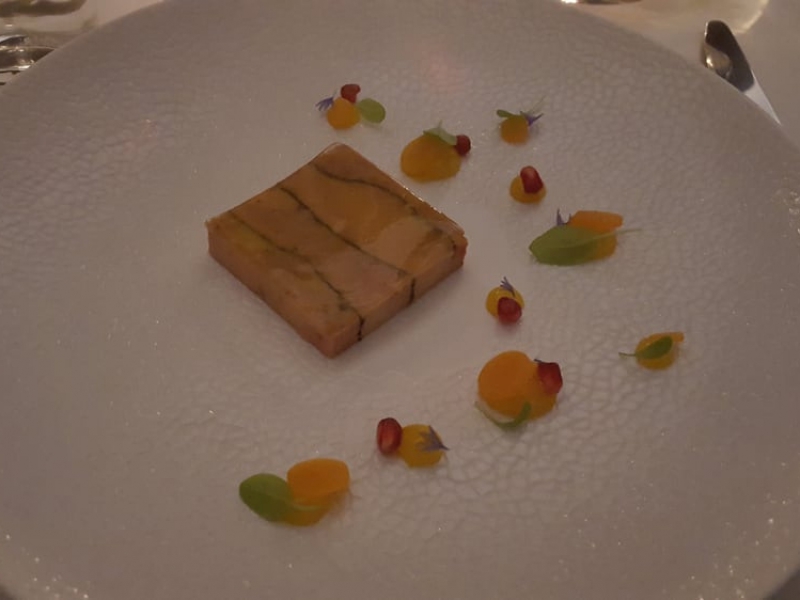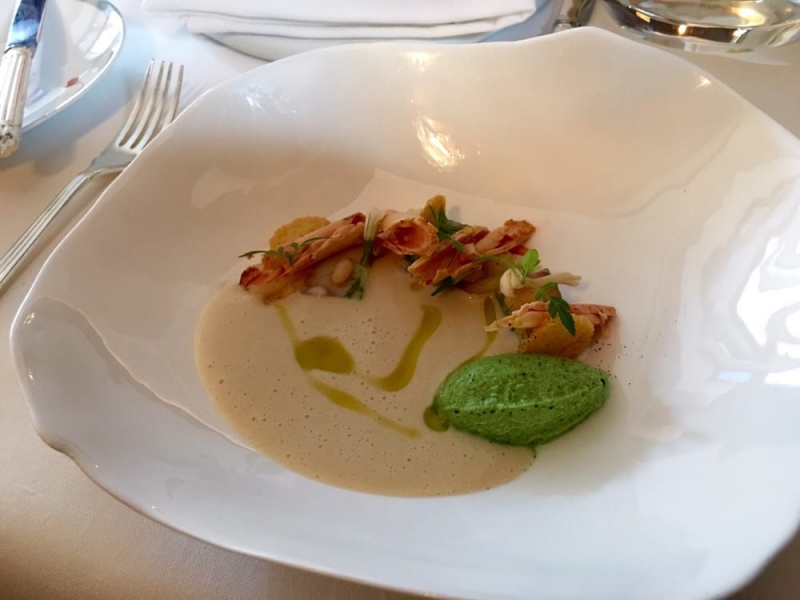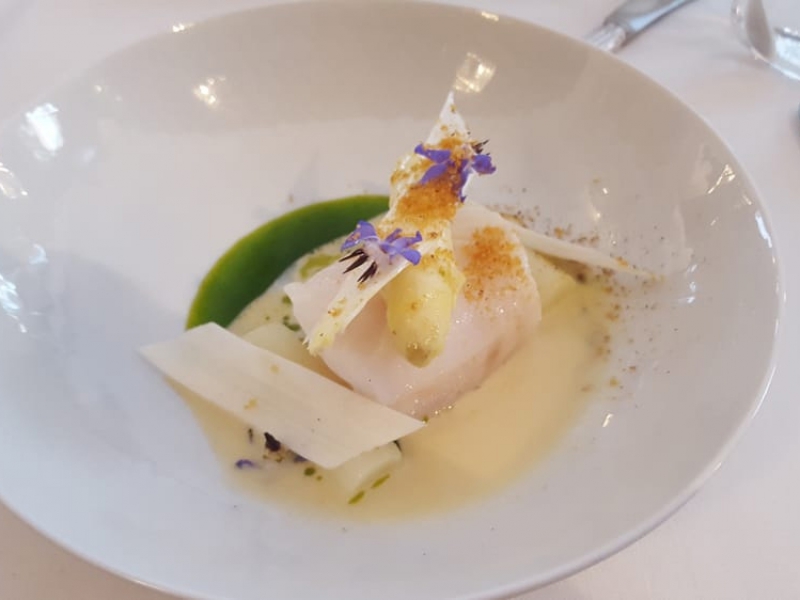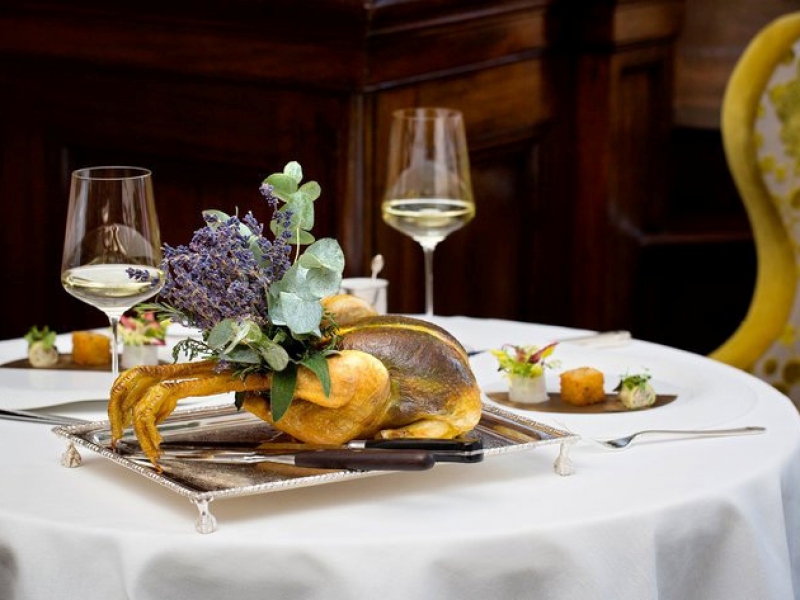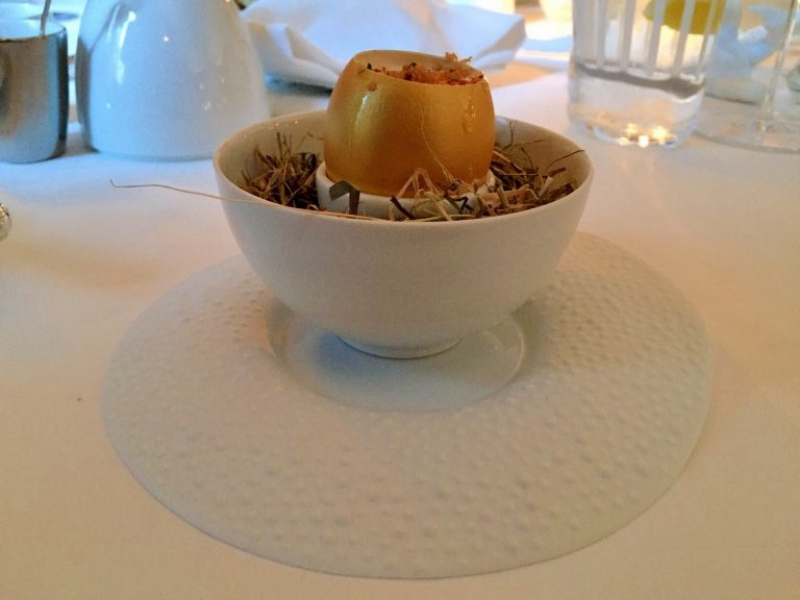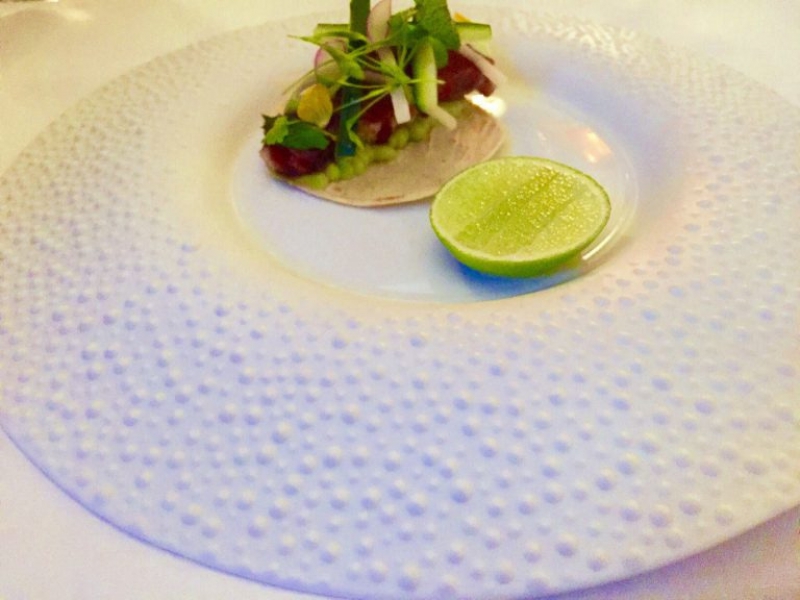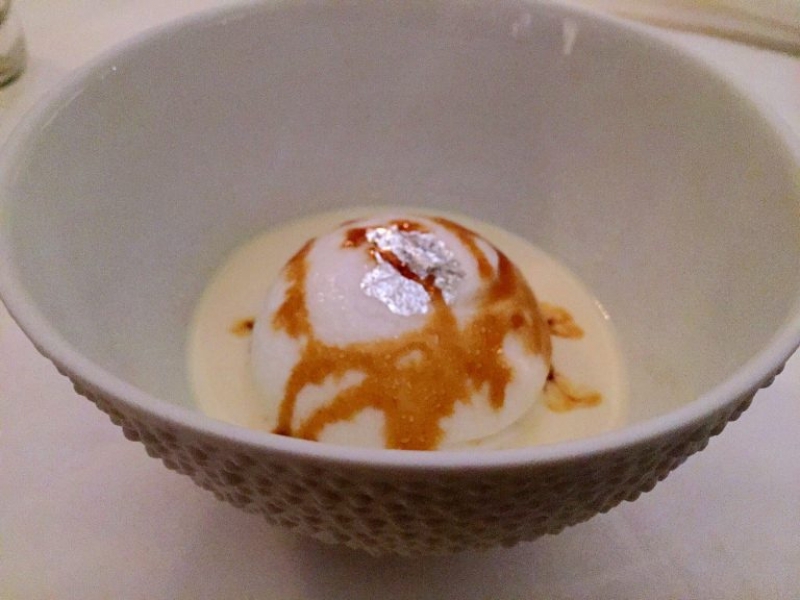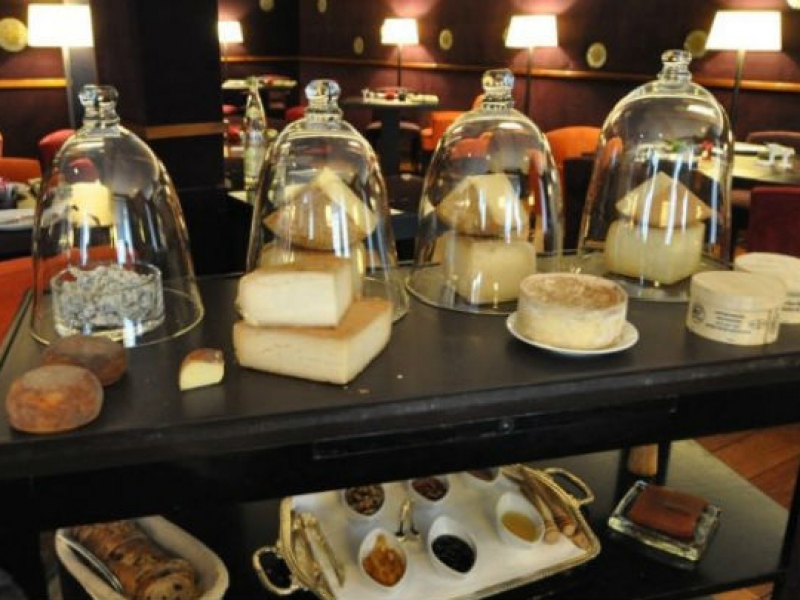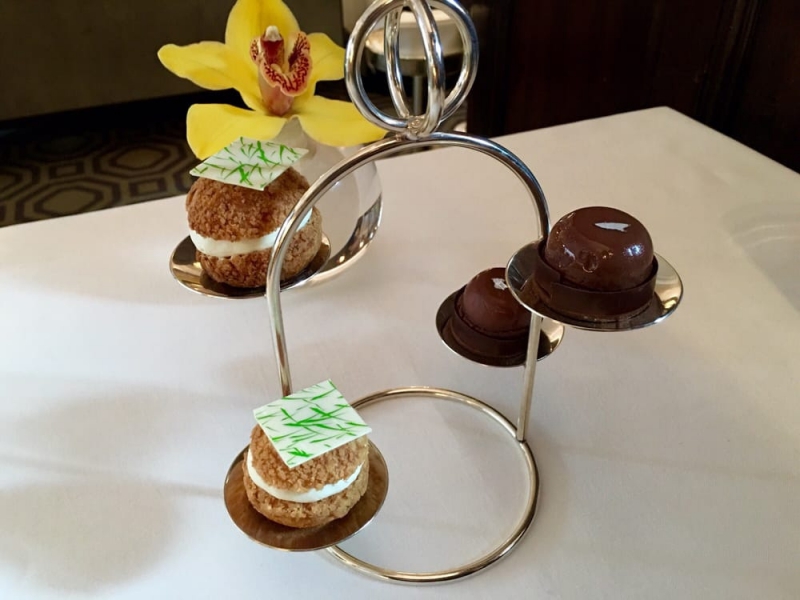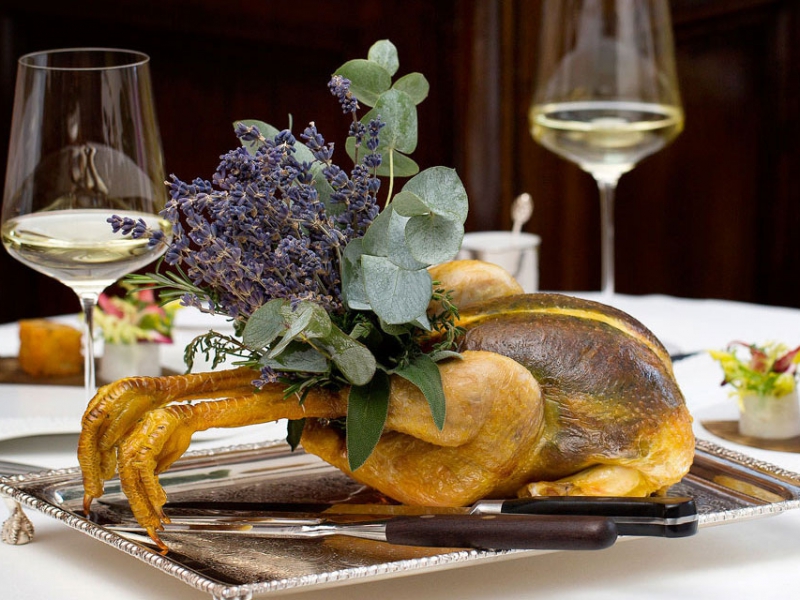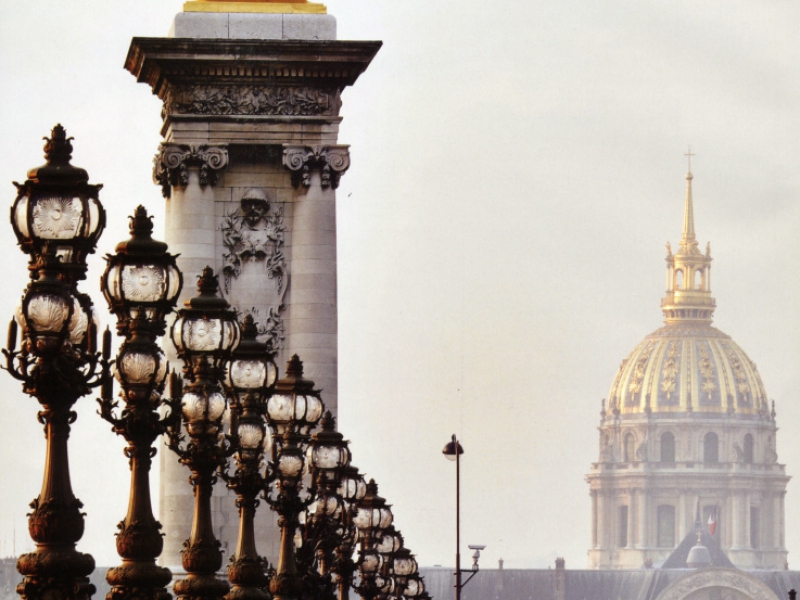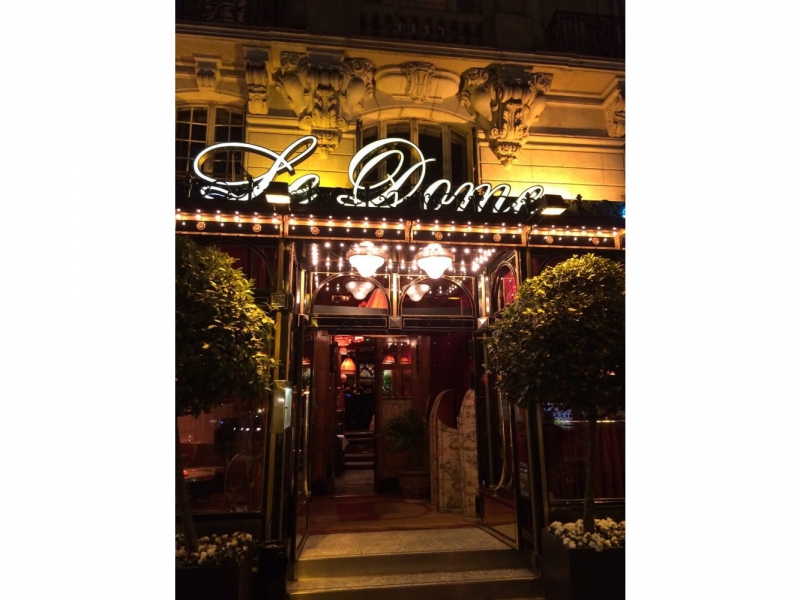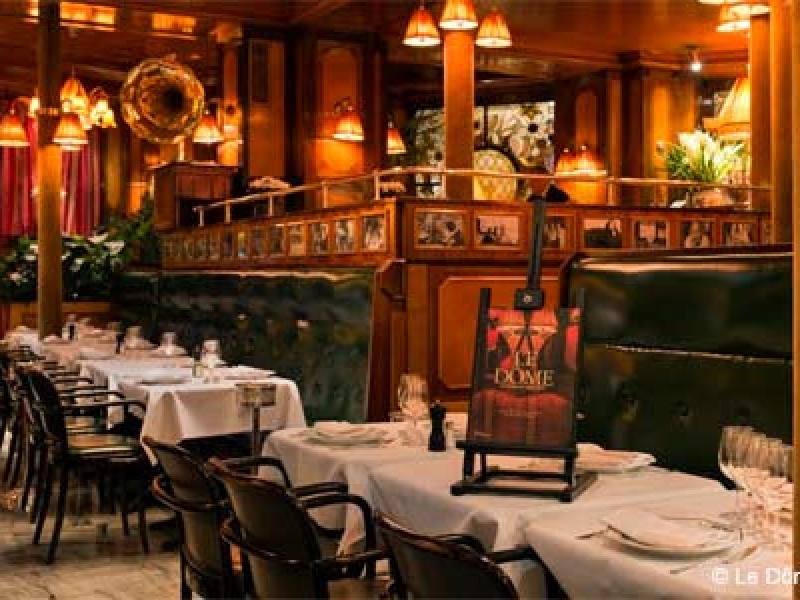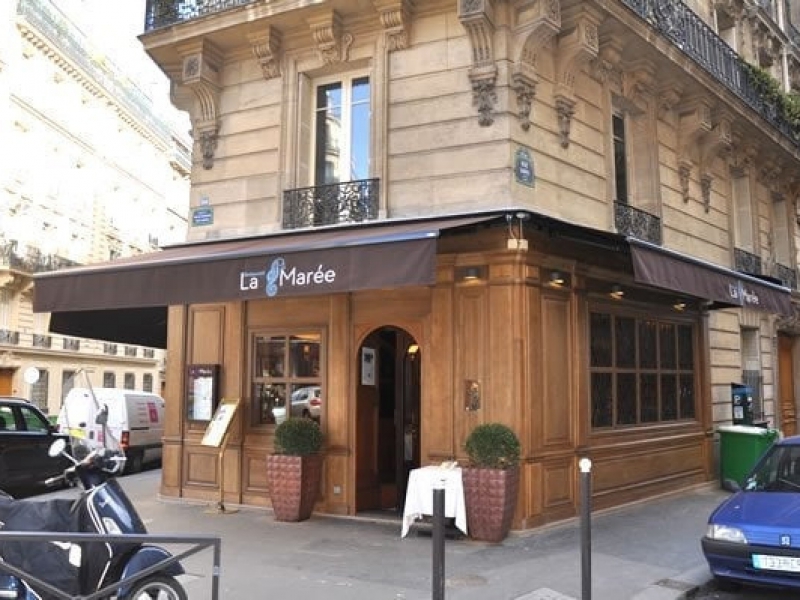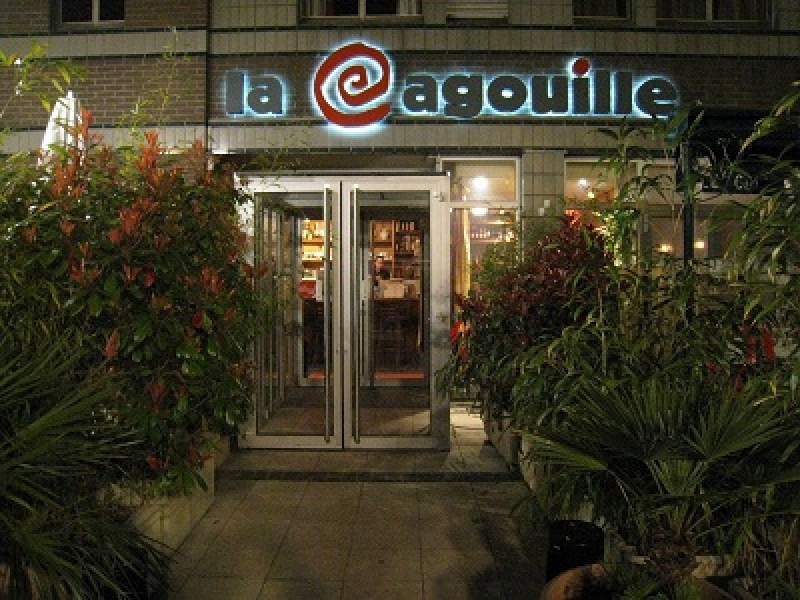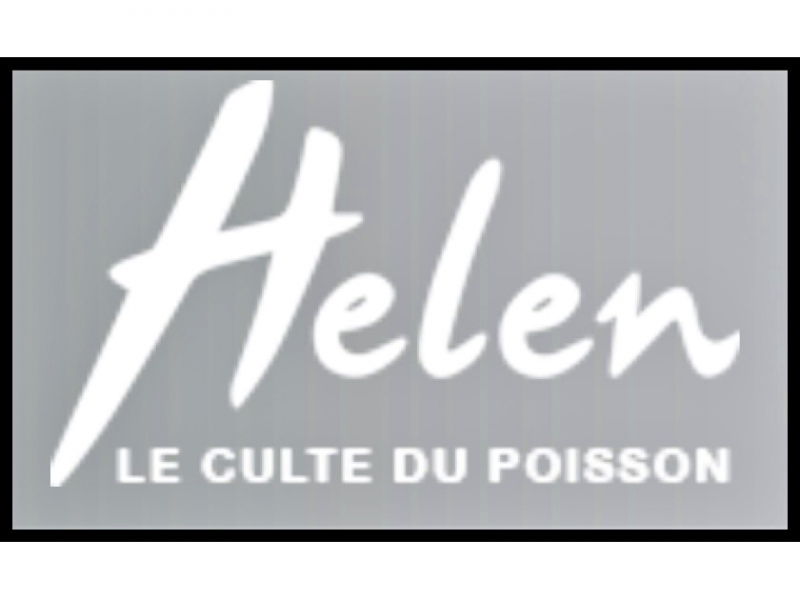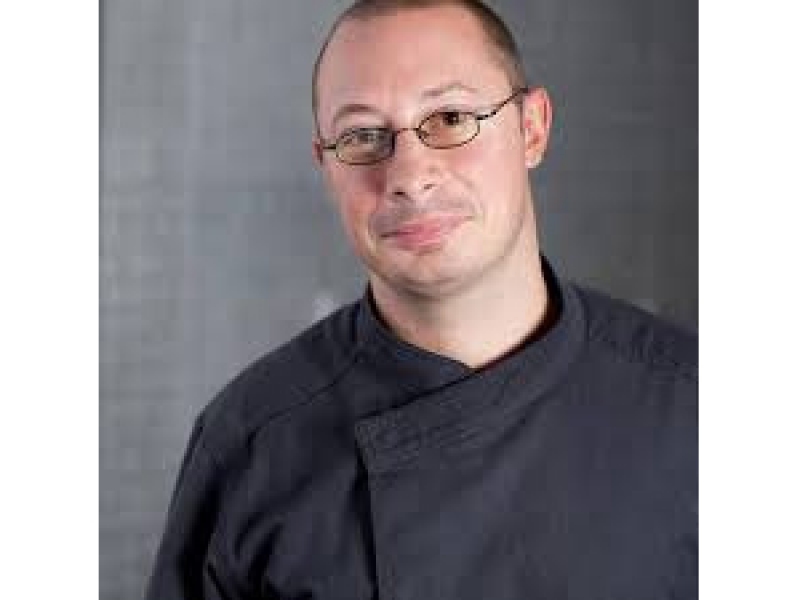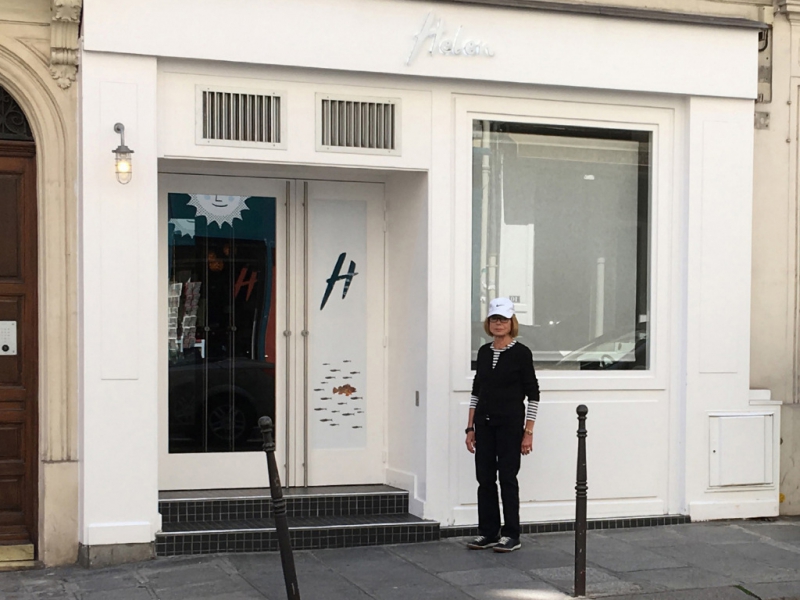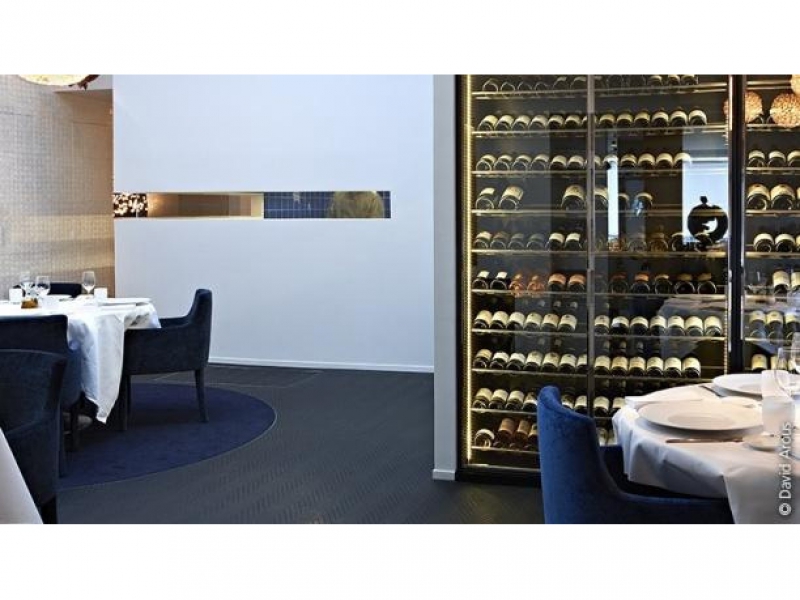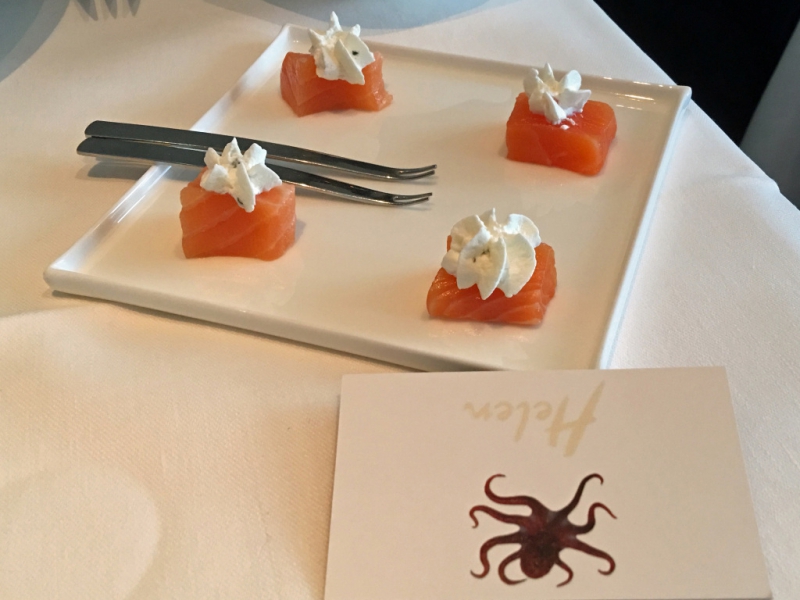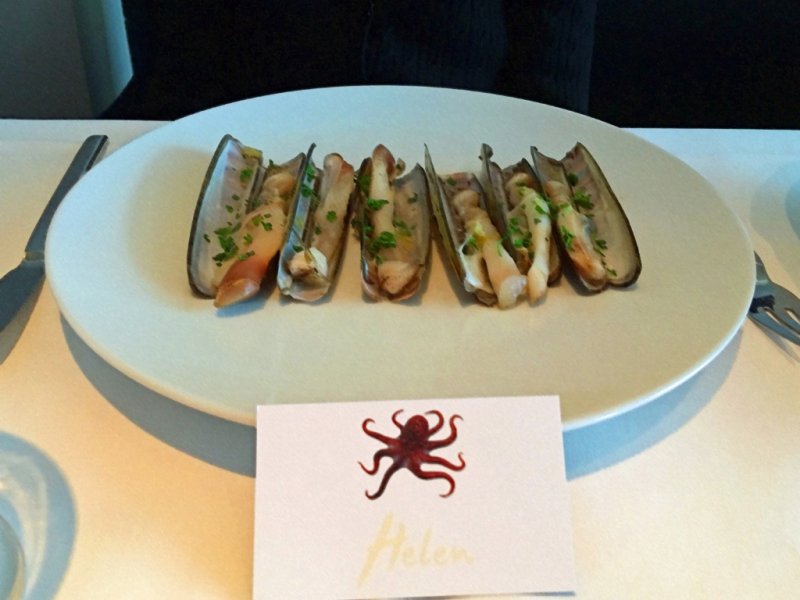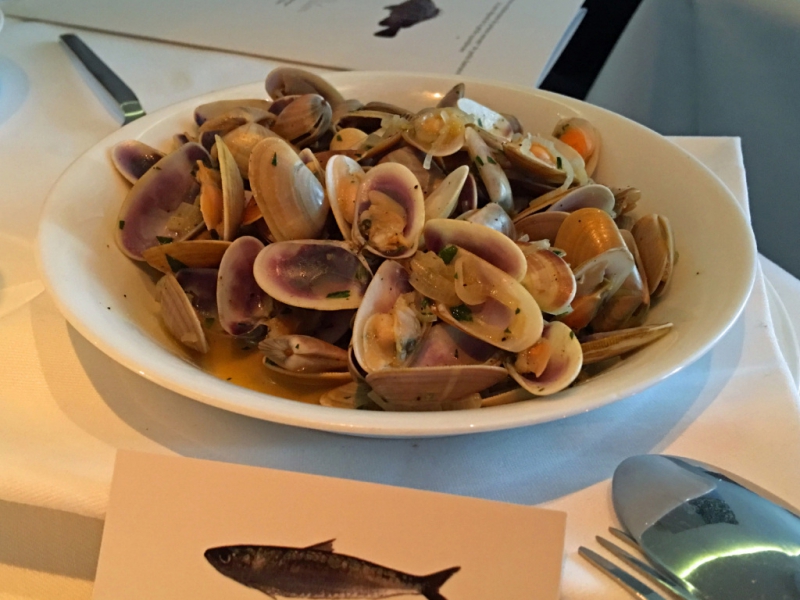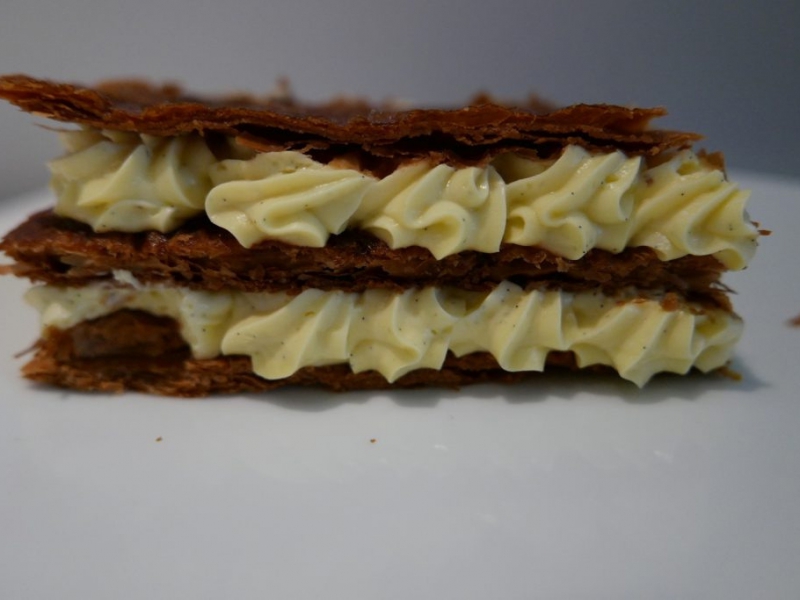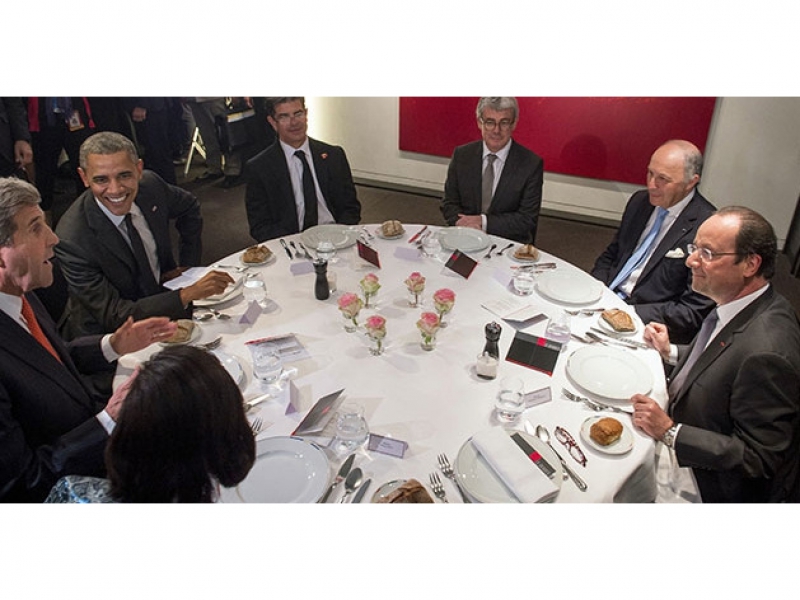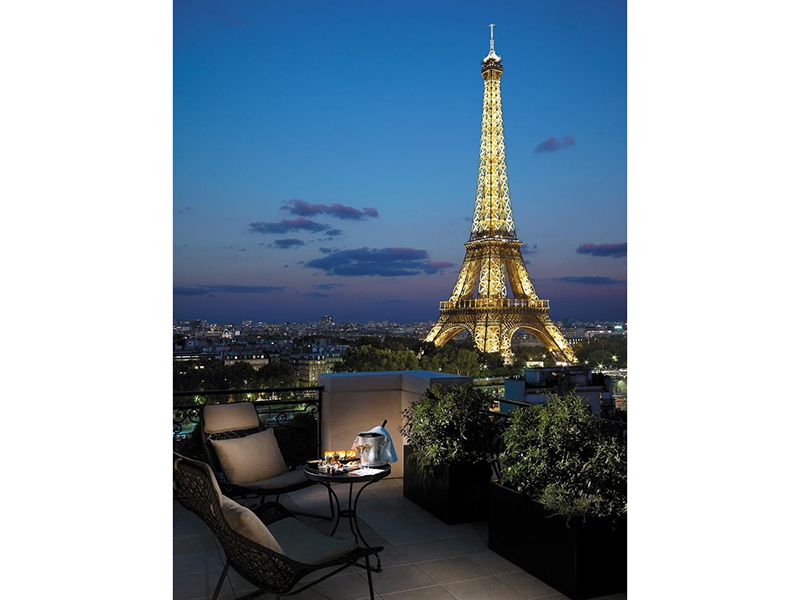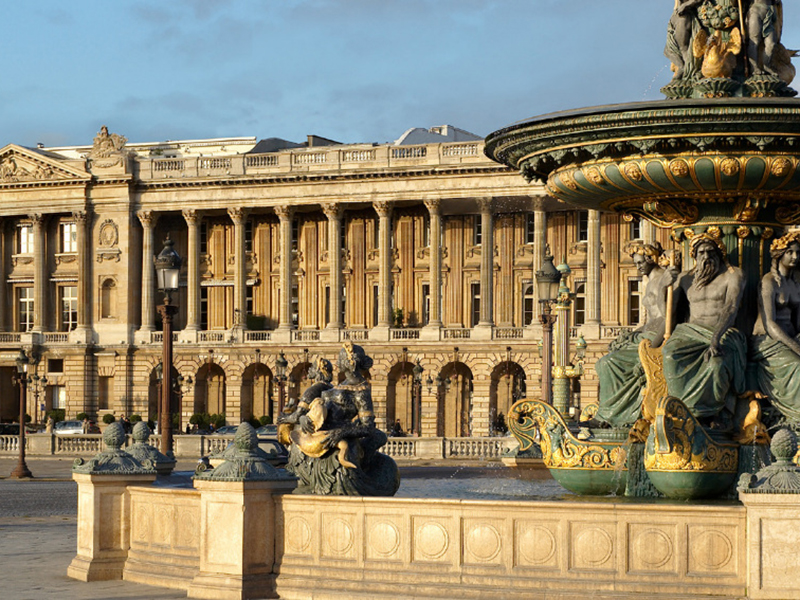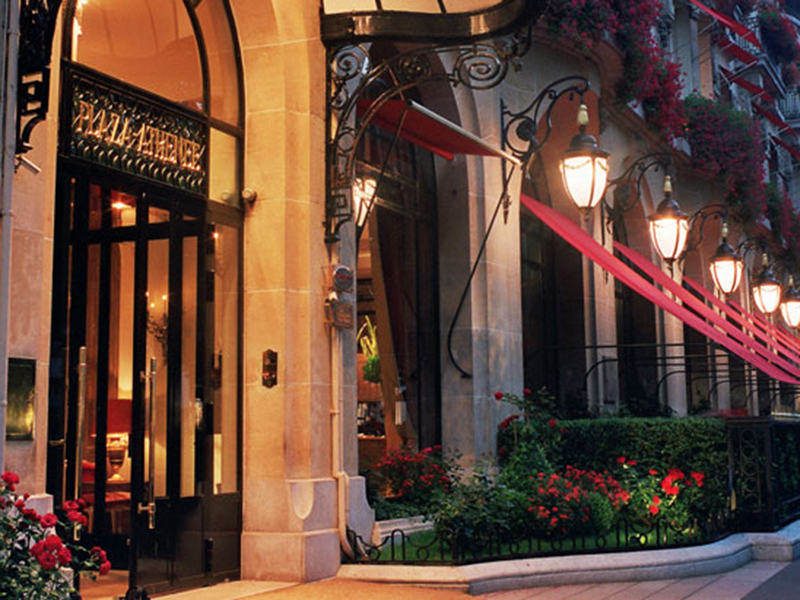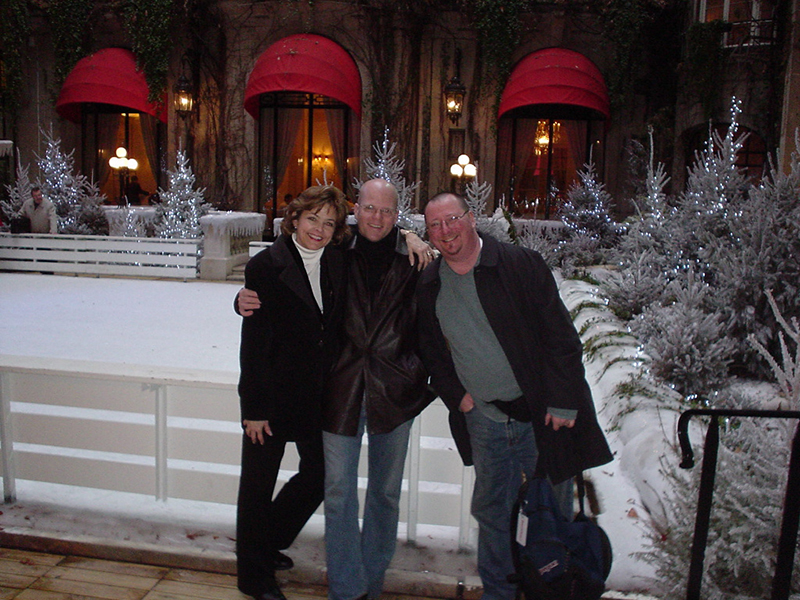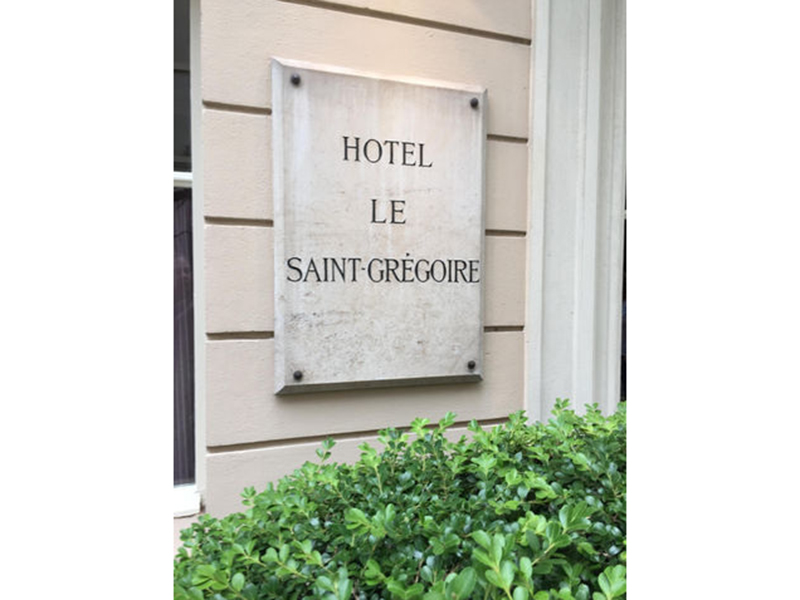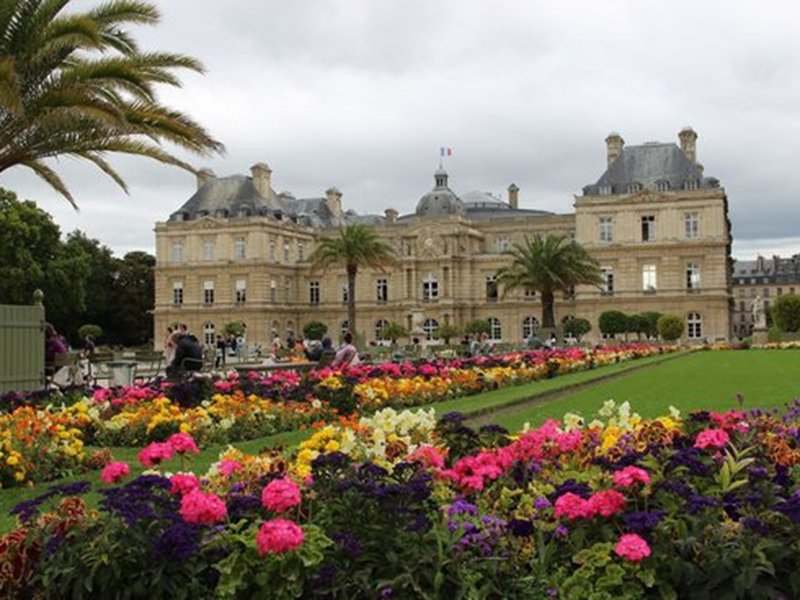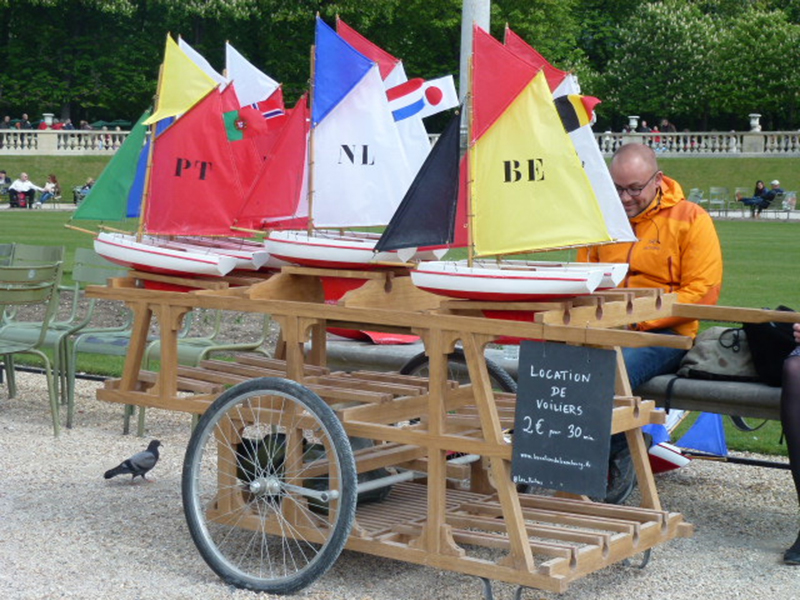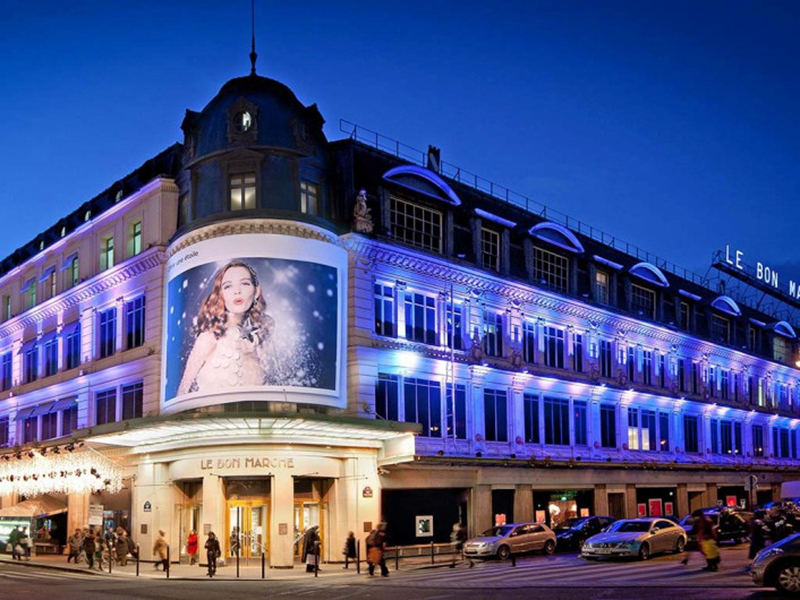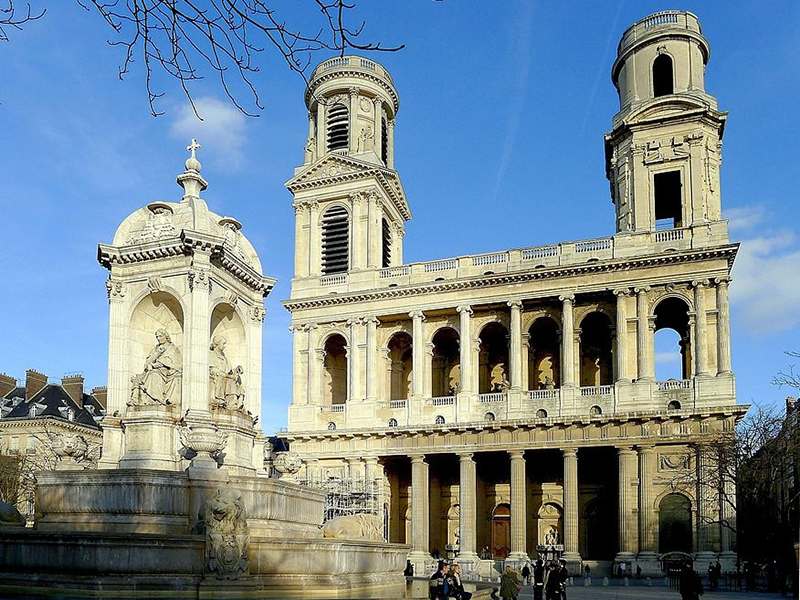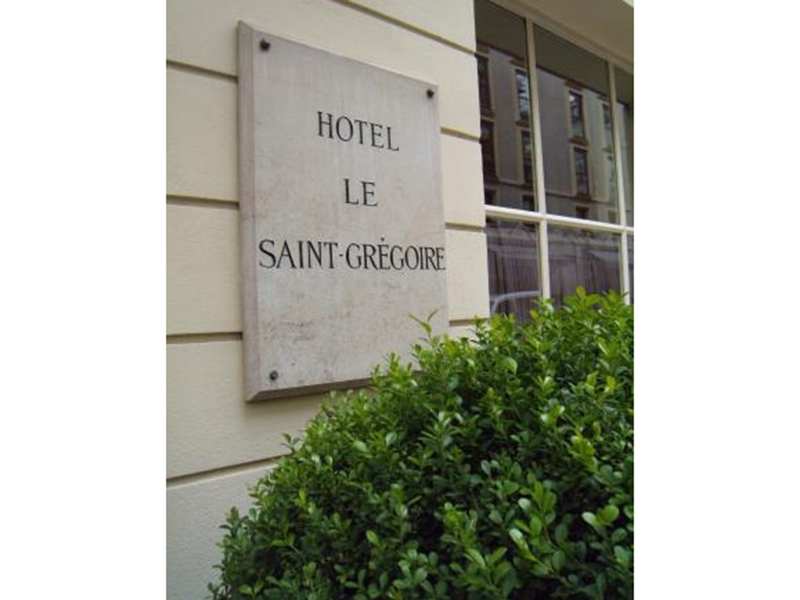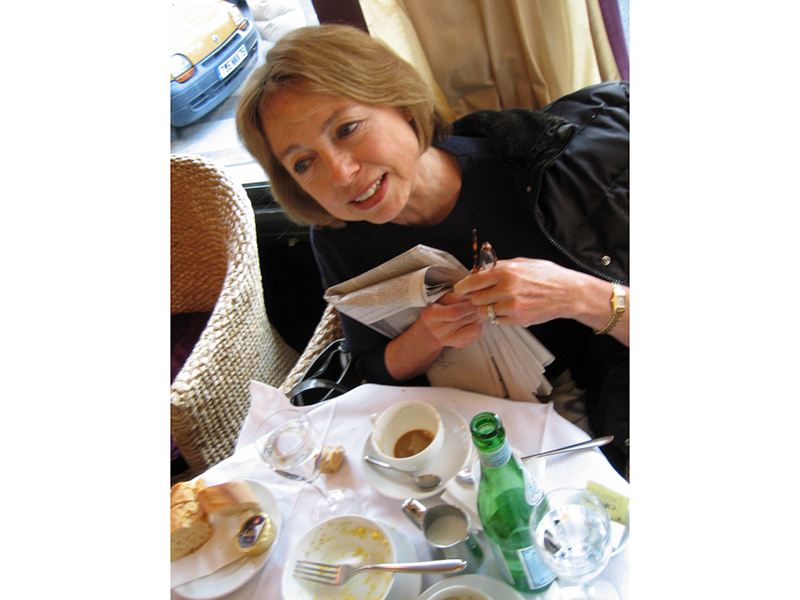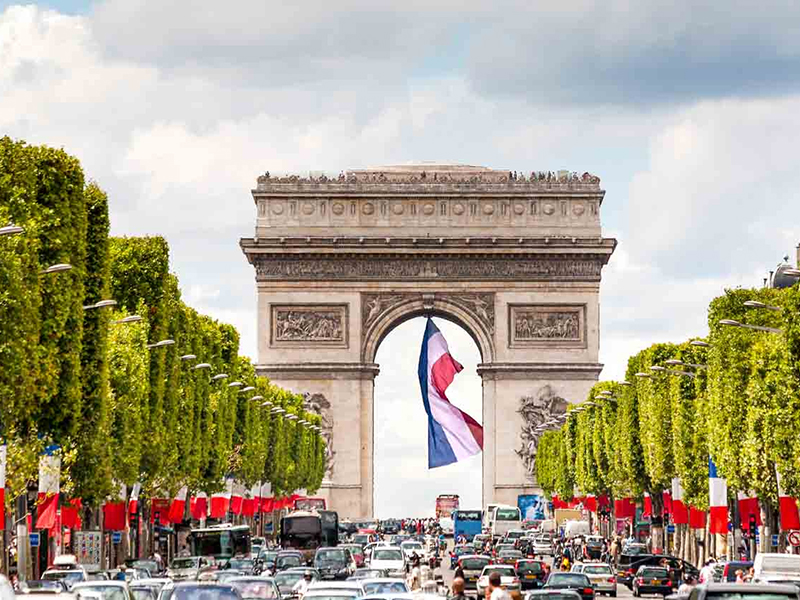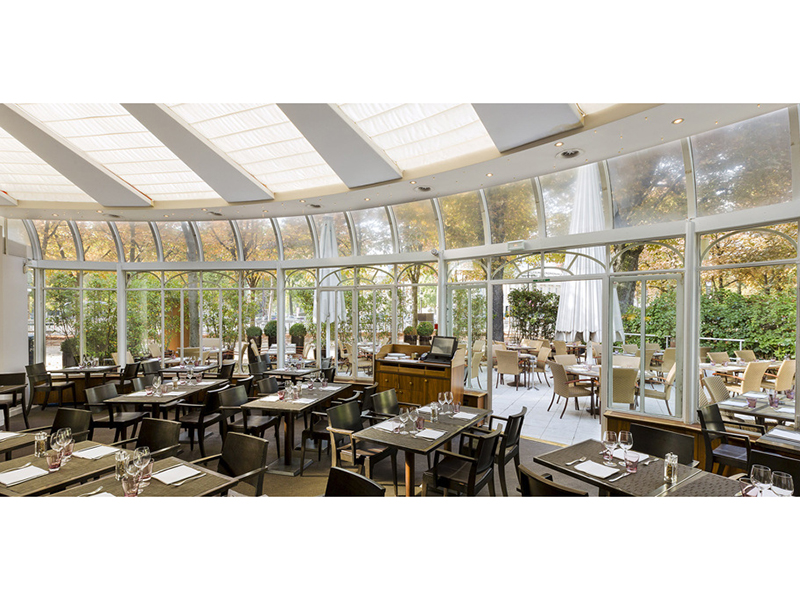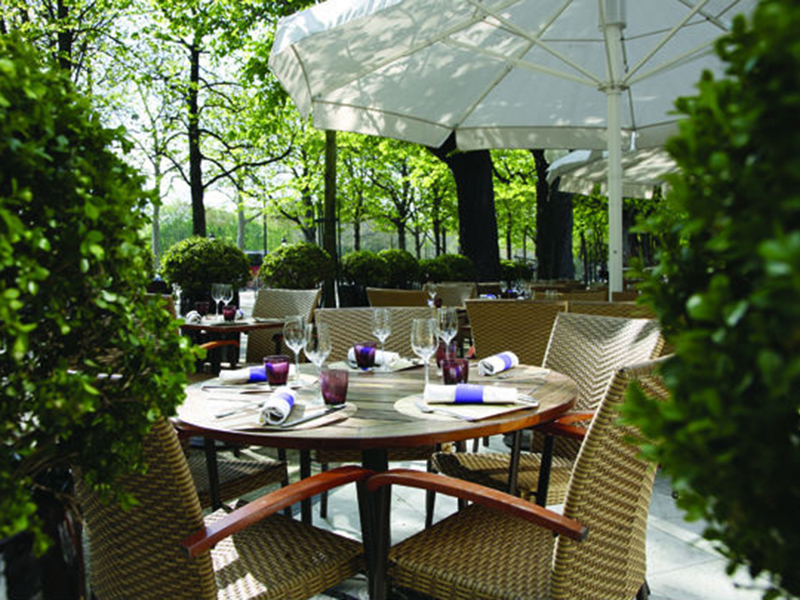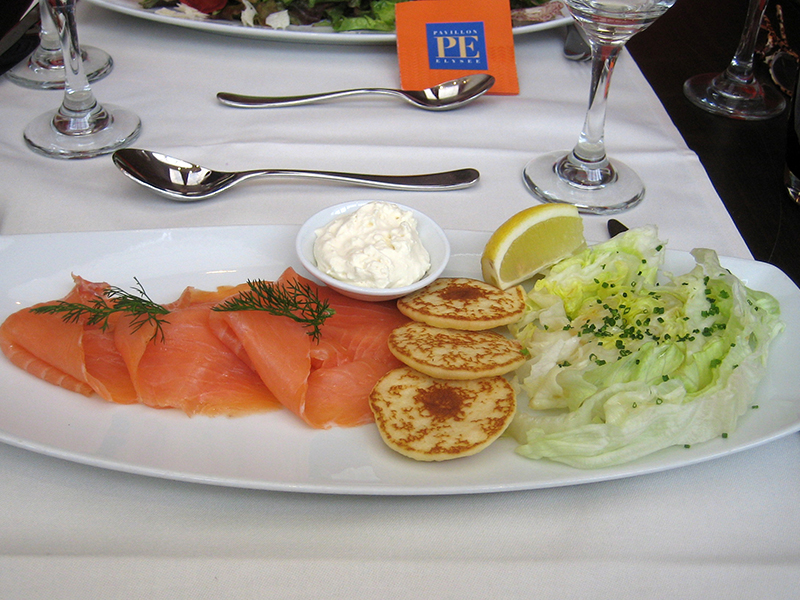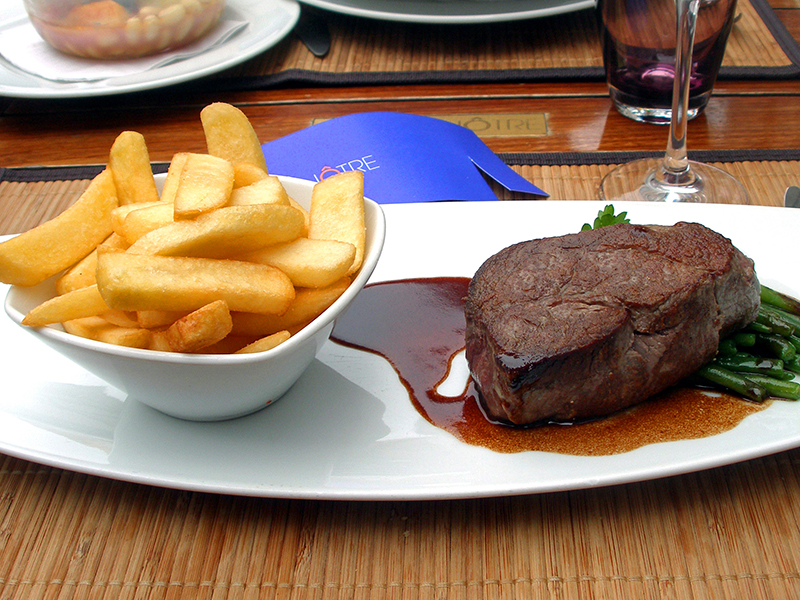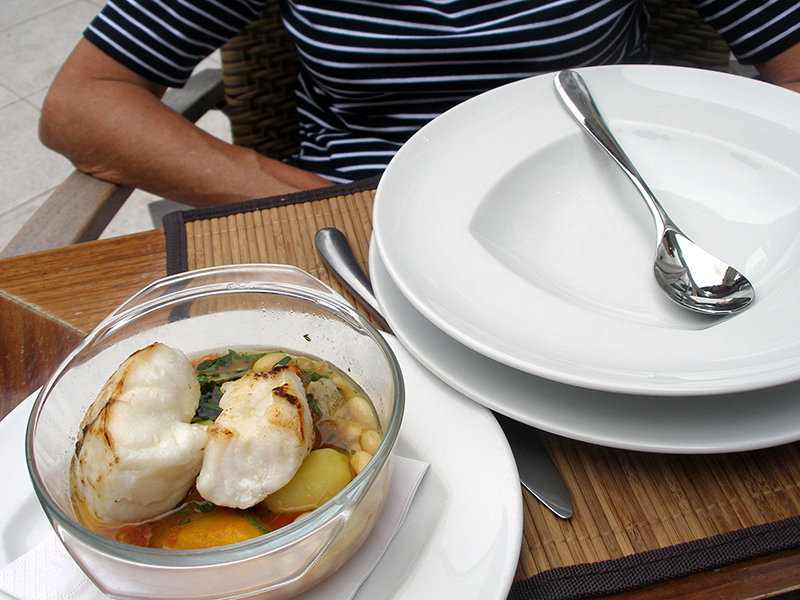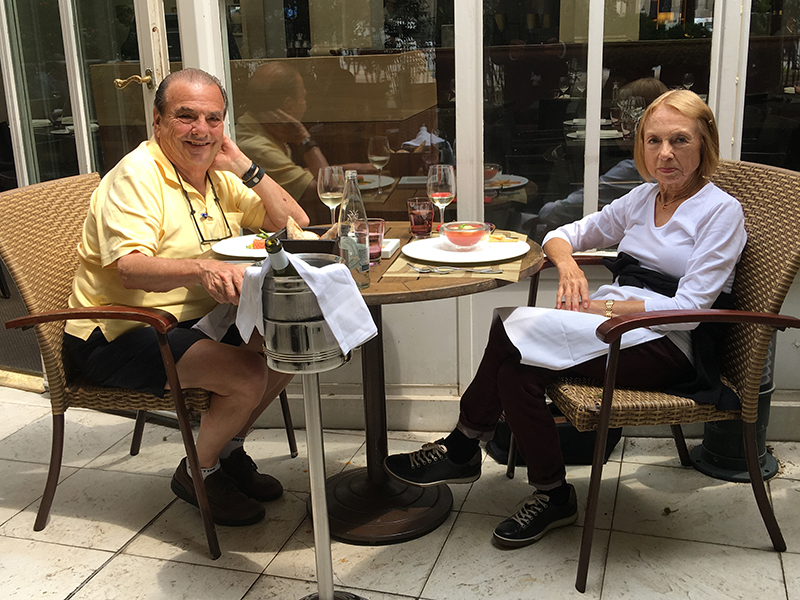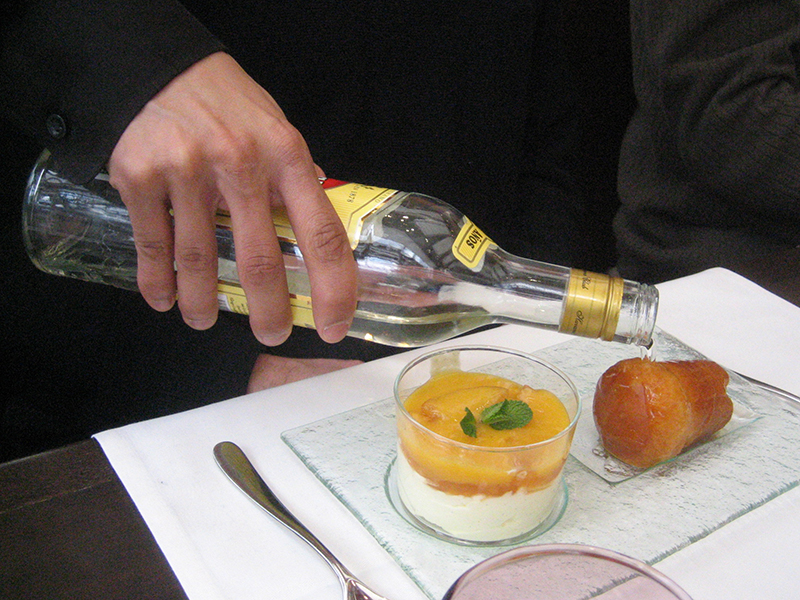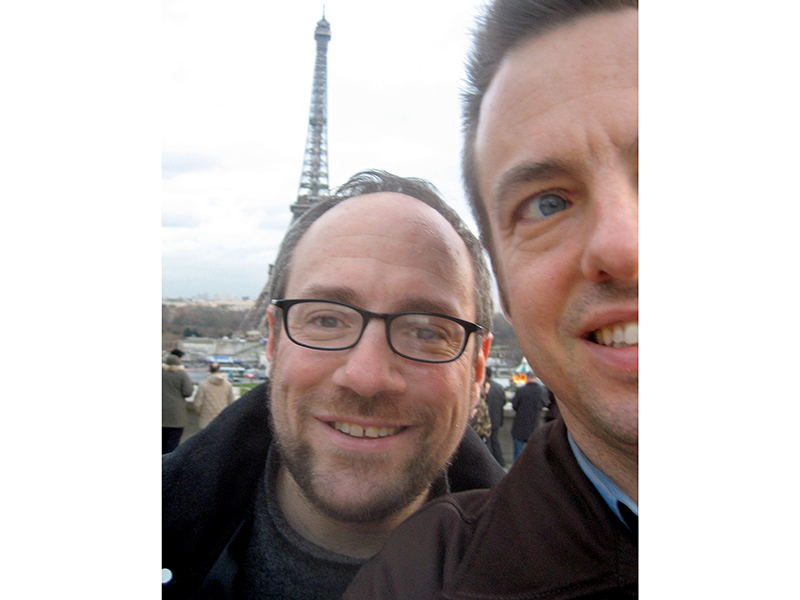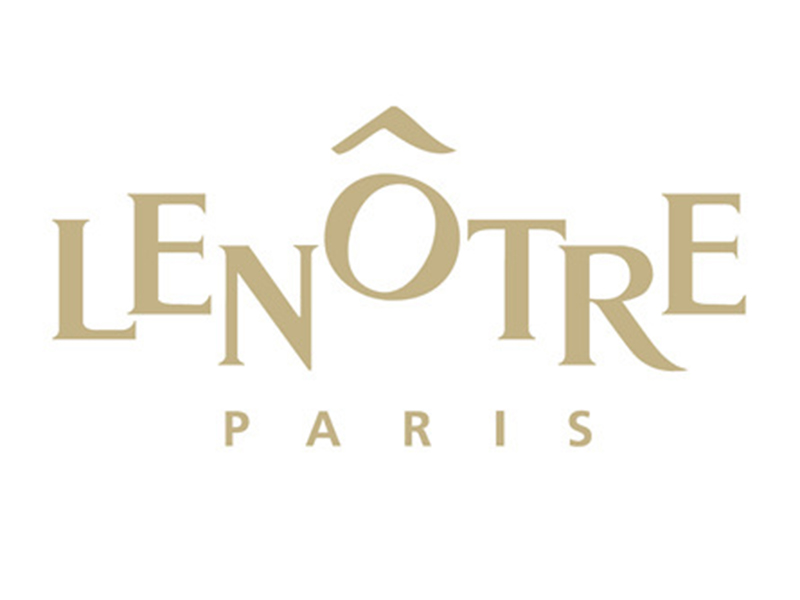Earlier this summer, Joanne and I had the opportunity to revisit one of our favorite Paris restaurants: LE RÉCAMIER. Situated in the 7th Arrondisement on the Left Bank of the Seine, it’s a short stroll from the Bon Marché department store (site of Paris’ best food hall), and just across the street from the Hotel Lutetia (home in 1940 to the commanding officers of the German occupation forces).
Le Récamier was named after the early nineteenth century socialite, Juliette Récamier. Said to be a stunning flirt who operated a conversational “salon” in her home, she entertained the crème de la crème of Parisian society, including single ladies and not-so-single gentlemen. Politics and literature were discussed, and it has been reported that mistresses could be found and exchanged under her watchful eye. I am reminded (and I paraphrase) the quote by Claude Raines (Captain Renault) in the film Casablanca: “I’m shocked, SHOCKED to find that ****** is going on here!”
Charming and chic (but not fancy, pretentious or crazy-nuts expensive), Le Récamier attracts more than its share of celebrities. They range from diplomats and heads of state (Jacques Chirac, Michelle Obama and her daughters) to film stars like Gerard Depardieu, Catherine Deneuve, Gwyneth Paltrow and Ron Howard.
The interior ambiance is tasteful and the seating comfortable, but on a nice day or a balmy summer evening reserve one of the 45 outdoor tables. We recommend #16 and #280, but actually there are no bad options. Alert: the restaurant is closed on Sundays.
What distinguishes Le Récamier, however, isn’t its design, but its menu, which is all about SOUFFLÉS – wonderful soufflés, extra-gooey, melt-in-your-mouth soufflés. They’re intensely flavorful, creamy, perfect puffs, light as air.
Wrote Vogue magazine: “Le Récamier…salty or sweet? This hidden gem has the best soufflés in Paris.”
The term “soufflé” translates as “to breathe, to inflate, to puff.” Earliest iterations appeared in the 18th century, and to this day the recipes appear not to have changed much. They’re either savory or sweet, and all involve eggs and room-temperature beaten egg whites. I’ve been told that they are pesky little devils to make, that there is no room for error, and that when ready, they wait for no one. Five minutes out of the oven and they’ll fall. Oh, and DO NOT OPEN THE OVEN ‘TIL THEY’RE DONE!!!
Hmmm, I just wonder – because when I peeked into the kitchen, the chef had the oven door wide OPEN with five or six soufflés baking away.
Is this, perhaps, a SACRED COW that needs to be SLAIN? We’ll soon find out. I’m gonna test the notion at Salut.
Now, there are a few – but only a few – non-soufflé items on Le Récamier’s menu. One could begin, as I did on one occasion, with foie gras. But…I could have a foie gras soufflé as well. For a main course, I observed a guest eating Steak Frites au Poivre. But he could just as easily have ordered the Boeuf Bourguignon Soufflé.
Other soufflé choices that we’ve enjoyed include mushroom, four cheese, spring pea, broccoli, asparagus and escargot (our adventuresome grandson had that).
The day we visited, fresh seabass was the featured special, along with a gorgeous version of a lobster roll. Both looked good, but heck, you’re at a SOUFFLÉ restaurant. Get a seafood soufflé for God’s sake. They’re offered in varieties including smoked salmon with dill sauce, crawfish, or lobster ($28.50 euros; the priciest item on a menu where entrees average $22-24 euros).
On to dessert….
Even though we shared a cheese plate, each of us indulged in our own personal dessert soufflé. They’re slightly smaller than entrees and will run you between $14-15 euros.
Le Récamier is respectful of the seasons, and changes out its menus quarterly. Once in October, I had a wonderful spiced pumpkin soufflé. Berry versions abound in summer – strawberry, apricot, blueberry and raspberry, among other options.
Whatever the season, you must order Le Récamier’s three signature dessert soufflés, which are available year-round. Don’t get just one of them. Get all three:
THE CHOCOLATE SOUFFLÉ. No skimping here. The chocolate is 70% Valrhona premium chocolate.
THE GRAND MARNIER SOUFFLÉ. This deeply rich vanilla rendition with orange zest whipped into the egg whites is topped tableside with a healthy dose of Grand Marnier.
THE SALTED CARAMEL AND SALTED BUTTER SOUFFLÉ. Punctuated with deep, dark Valrhona chocolate sauce.
You can, and we did, craft a three-course meal of soufflés. NO REGRETS.
Which isn’t to say there aren’t hazards on the menu (a Cheeseburger Soufflé is offered).
You may also regret the fact that Parisians appear to be treated better than tourists at Le Récamier. But WTF, they’re French and you’re in Paris. What do you expect?
WTF
Phil


